The History Book Club discussion

This topic is about
Woodrow Wilson
PRESIDENTIAL SERIES
>
WOODROW WILSON: A BIOGRAPHY - GLOSSARY (SPOILER THREAD)
 Treaty of Brest-Litovsk
Treaty of Brest-Litovsk
The Treaty of Brest-Litovsk brought about the end of the war between Russia and Germany in 1918. The German were reminded of the harshness of Brest-Litovsk when they complained about the severity of the Treaty of Versailles signed in June 1919.
Lenin had ordered that the Bolshevik representatives should get a quick treaty from the Germans to bring about an end to the war so that the Bolsheviks could concentrate on the work they needed to do in Russia itself.
The start of the discussions was an organisational disaster. Representatives from the Allies, who were meant to have attended, failed to show. Russia, therefore, had to negotiate a peace settlement by herself.
After just one week of talks, the Russian delegation left so that it could report to the All-Russian Central Executive Committee. It was at this meeting that it became clear that there were three views about the peace talks held within the Bolshevik hierarchy.
Trotsky believed that Germany would offer wholly unacceptable terms to the Russians and that this would spur the German workers to rise up in revolt against their leaders and in support of their Russian compatriots. This rebellion would, in turn, spark off a world-wide workers rebellion.
Kamenev believed that the German workers would rise up even if the terms of the treaty were reasonable.
Lenin believed that a world revolution would occur over many years. What Russia needed now was an end to the war with Germany and he wanted peace, effectively at any cost.
On January 21st, 1918, the Bolshevik hierarchy met. Only 15 out of 63 supported Lenin’s viewpoint. 16 voted for Trotsky who wanted to wage a “holy war” against all militarist nations, including Germany. 32 voted in favour of a revolutionary war against the Germans, which would, they believed, precipitate a workers rebellion in Germany.
The whole issue went to the party’s Central Committee. This body rejected the idea of a revolutionary war and supported an idea of Trotsky. He decided that he would offer the Germans Russia’s demobilisation and an end to the war but would not conclude a peace treaty with them. By doing this he hoped to buy time. In fact he got the opposite.
On February 18th, 1918, the Germans, tired of the Bolshevik’s procrastination, re-started their advance into Russia and advanced 100 miles in just four days. This re-confirmed in Lenin’s mind that a treaty was needed very quickly. Trotsky, having dropped the idea of the workers of Germany coming to the aid of Russia, followed Lenin. Lenin had managed to sell his idea to a small majority in the party’s hierarchy, though there were many who were still opposed to peace at any price with the Germans. However, it was Lenin who read the situation better than anyone else.
The Bolsheviks had relied on the support of the lowly Russian soldier in 1917. Lenin had promised an end to the war. Now the party had to deliver or face the consequences. On March 3rd, 1918, the treaty was signed.
Under the treaty, Russia lost Riga, Lithuania, Livonia, Estonia and some of White Russia. These areas had great economic importance as they were some of the most fertile farming areas in Western Russia. Germany was allowed by the terms of the treaty to exploit these lands to support her military effort in the west.
Lenin argued that though the treaty was harsh, it freed the Bolsheviks up to deal with problems in Russia itself. Only those on the extreme left of the party disagreed and were still of the belief that the workers of Germany would rise up in support of them. By March 1918, this clearly was not going to be the case. Lenin’s pragmatic and realistic approach enabled him to strengthen his hold on the party even more and side-line the extreme left still further.
(Source: http://www.historylearningsite.co.uk/...)
More:
http://en.wikipedia.org/wiki/Treaty_o...
http://www.princeton.edu/~achaney/tmv...
http://www.spartacus.schoolnet.co.uk/...
http://militaryhistory.about.com/od/m...
http://www.marxists.org/archive/trots...
 by
by
 Leon Trotsky
Leon Trotsky by John Wheeler-Bennett
by John Wheeler-Bennett by Yuri Felshtinsky (no photo)
by Yuri Felshtinsky (no photo) by
by
 George F. Kennan
George F. Kennan
 Russian Revolution (October 1917)
Russian Revolution (October 1917)
On 8th July, 1917, Alexander Kerensky became the new leader of the Provisional Government. Kerensky was still the most popular man in the government because of his political past. In the Duma he had been leader of the moderate socialists and had been seen as the champion of the working-class. However, Kerensky, like George Lvov, was unwilling to end the war. In fact, soon after taking office, he announced a new summer offensive.
Soldiers on the Eastern Front were dismayed at the news and regiments began to refuse to move to the front line. There was a rapid increase in the number of men deserting and by the autumn of 1917 an estimated 2 million men had unofficially left the army.
Some of these soldiers returned to their homes and used their weapons to seize land from the nobility. Manor houses were burnt down and in some cases wealthy landowners were murdered. Kerensky and the Provisional Government issued warnings but were powerless to stop the redistribution of land in the countryside.
On 19th July, Kerensky gave orders for the arrest of leading Bolsheviks who were campaigning against the war. This included Vladimir Lenin, Gregory Zinoviev, Lev Kamenev, Anatoli Lunacharsky, and Alexandra Kollontai. The Bolshevik headquarters at the Kshesinsky Palace, was also occupied by government troops.
After the failure of the July Offensive on the Eastern Front, Kerensky replaced General Alexei Brusilov with General Lavr Kornilov, as Supreme Commander of the Russian Army. The two men soon clashed about military policy. Kornilov wanted Kerensky to restore the death-penalty for soldiers and to militarize the factories. Kerensky refused and sacked Kornilov.
Kornilov responded by sending troops under the leadership of General Krymov to take control of Petrograd. Kerensky was now in danger and was forced to ask the Soviets and the Red Guards to protect Petrograd. The Bolsheviks, who controlled these organizations, agreed to this request, but in a speech made by their leader, Vladimir Lenin, he made clear they would be fighting against Kornilov rather than for Kerensky.
Within a few days Bolsheviks had enlisted 25,000 armed recruits to defend Petrograd. While they dug trenches and fortified the city, delegations of soldiers were sent out to talk to the advancing troops. Meetings were held and Kornilov's troops decided not to attack Petrograd. General Krymov committed suicide and Kornilov was arrested and taken into custody.
Lenin now returned to Petrograd but remained in hiding. On 25th September, Kerensky attempted to recover his left-wing support by forming a new coalition that included more Mensheviks and Socialist Revolutionaries. However, with the Bolsheviks controlling the Soviets and now able to call on 25,000 armed militia, Kerensky's authority had been undermined.
The Bolsheviks set up their headquarters in the Smolny Institute. The former girls' convent school also housed the Petrograd Soviet. Under pressure from the nobility and industrialists, Alexander Kerensky was persuaded to take decisive action. On 22nd October he ordered the arrest of the Military Revolutionary Committee. The next day he closed down the Bolshevik newspapers and cut off the telephones to the Smolny Institute.
Leon Trotsky now urged the overthrow of the Provisional Government. Lenin agreed and on the evening of 24th October, 1917, orders were given for the Bolsheviks began to occupy the railway stations, the telephone exchange and the State Bank. The following day the Red Guards surrounded the Winter Palace. Inside was most of the country's Cabinet, although Kerensky had managed to escape from the city.
The Winter Palace was defended by Cossacks, some junior army officers and the Woman's Battalion. At 9 p.m. the Aurora and the Peter and Paul Fortress began to open fire on the palace. Little damage was done but the action persuaded most of those defending the building to surrender. The Red Guards, led by Vladimir Antonov-Ovseenko, now entered the Winter Palace and arrested the Cabinet ministers.
On 26th October, 1917, the All-Russian Congress of Soviets met and handed over power to the Soviet Council of People's Commissars. Vladimir Lenin was elected chairman and other appointments included Leon Trotsky (Foreign Affairs) Alexei Rykov (Internal Affairs), Anatoli Lunacharsky (Education), Alexandra Kollontai (Social Welfare), Felix Dzerzhinsky (Internal Affairs), Joseph Stalin (Nationalities), Peter Stuchka (Justice) and Vladimir Antonov-Ovseenko (War).
(Source: http://www.spartacus.schoolnet.co.uk/...)
More:
http://en.wikipedia.org/wiki/October_...
http://www.marxists.org/archive/trots...
http://history1900s.about.com/od/Russ...
http://www.bbc.co.uk/bitesize/higher/...
http://www.historytoday.com/edward-ac...

 by Richard Pipes (no photo)
by Richard Pipes (no photo) by
by
 Sheila Fitzpatrick
Sheila Fitzpatrick by
by
 Robert Service
Robert Service by Rex A. Wade (no photo)
by Rex A. Wade (no photo) by
by
 Orlando Figes
Orlando Figes by Philip Pomper (no photo)
by Philip Pomper (no photo)
 French Army Mutinies
French Army Mutinies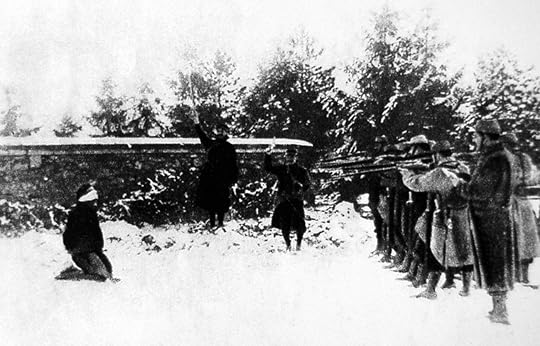
In the first two months of the war, the French lost 329,000 soldiers. By Christmas 1914, almost a half million French soldiers had died. By December 1916, 3 million Frenchmen had been killed or wounded.
Early in 1917, a new French Army commander-in-chief, General Robert Nivelle, planned a major offensive on the German lines. His strategy was to soften the German defenses with artillery and then, with the aid of tanks, hurl large numbers of troops at the enemy. Nivelle predicted that a "break-through" would occur within 48 hours. This would then lead to a crushing defeat of the German Army and an end to the war.
More than a million French soldiers left their trenches to attack across no-man's land on April 16. But things went wrong. The artillery failed to blow openings in the German barbed-wire defenses. Well-protected German machine guns cut down thousands of Frenchmen in deadly crossfires. Many French tanks were blown up or got mired in the mud. Hard-driving rain further slowed the French advance.
After a week of French attacks, the German lines still held. More than 100,000 French soldiers had been killed or wounded. Incredibly, General Nivelle insisted on continuing his offensive, believing that the big "break-through" would come at any time.
The 2nd Battalion of the 18th Infantry Regiment had taken part in this offensive, and German machine gun fire had devastated it. Of the 600 men in the battalion, only 200 lived through the assault. Dazed and demoralized, the 2nd Battalion survivors were promised a period of rest behind the front. Instead, replacements filled the ranks of the dead and wounded, and on April 29 the battalion was again ordered to the front.
Angry and unbelieving, the men refused. Many of them, drunk on cheap wine, shouted, "Down with the war!" By midnight, the soldiers had sobered up and regained their military discipline. By 2 a.m., they reluctantly began to march to the trenches on the French front lines. Recognizing that a brief mutiny had occurred, officers decided that an example had to made of some of the mutineers. In the dark, about a dozen members of the battalion were pulled, more or less at random, from the ranks. They were court-martialed for leading the mutiny. Only those clearly innocent escaped punishment. One soldier, for example, proved he was in the hospital at the time of the mutiny. He was replaced with another man from the battalion. Most were sentenced to prisons outside the country. Five were sentenced to be shot. (One escaped into the woods when German shells exploded as he was being led to the firing squad. He was never found.)
Another, far larger mutiny broke out on May 3. When called to assemble in their battalions and regiments, almost the entire battle-weary 2nd Division came drunk and without their weapons. "We're not marching!" the soldiers shouted. They refused to move out to the trenches. The officers retreated to headquarters, unsure of what to do.
Throughout history, armies traditionally have put down mutinies with force. They overpower rebelling troops and execute them. But this was an entire division. The officers would have difficulty getting sufficient troops to overpower a division. And when they did overpower the division, they couldn't shoot thousands of men. It would be considered a massacre. Besides, they needed the men to fight.
Bucking tradition, the officers decided to send the most respected officers to urge the men to return to the front. The officers talked to the troops, appealing to their patriotism and their duty to replace exhausted troops. The men explained they had no problem defending the trenches. They just didn't want to take part in any more futile offensives. By the end of the day, the troops had sobered up, and they marched to the front. The few men who still refused to go were arrested and taken away. No one else in the 2nd Division was punished.
Soon, more and more units refused to obey orders to march to the front. With the German Army only 60 miles from Paris, this crisis in military discipline threatened the existence of the French nation.
Most of the mutinies in May fit the same pattern. They started at night with drunken infantry troops who were being ordered back to the front. The troops had suffered high losses in the recent offensives, and they wanted no part of future offensives. Many had read pacifist pamphlets. Most had heard about the revolution unfolding in Russia, and they wanted to force their government to end the war. They often marched on railway stations and tried to seize trains to Paris. When they sobered up, most of the troops returned to their units and went to the front. Most of the mutinies went unpunished. But the officers knew they could not rely on these troops to attack. In fact, officers had great difficulty telling which troops were dependable.
The increasing incidents of "collective indiscipline," as the military called the mutinies, ended General Nivelle's dream of a grand victory. On May 15, General Henri Philippe Petain took over as commander-in-chief. A few days later, Petain issued Directive No. 1, which suspended "large-scale attacks in depth."
The Mutinies Continue
Petain's directive basically meant that French troops would man their trenches and defend against German attack. Most French soldiers were willing to do this. One group of mutineers wearing flowers in their uniform button holes had told their stunned commander:
You have nothing to fear, we are prepared to man the trenches, we will do our duty and the [Germans] will not get through. But we will not take part in attacks which result in nothing but useless casualties . . . .
In spite of Petain's new order, the mutinies continued and even grew in number and scope. The men complained about poor food rations and not getting leaves to visit their families. Many of them read anti-war pamphlets, sent from radical organizations in Paris. During early June, when the most serious incidents took place, units in 16 different army divisions mutinied. Veteran soldiers shot at their officers, set fire to their camps, fought with civilian and military police, and took part in drunken brawls with each other. Rebellious soldiers put their thumbs down and shouted "End the War!" at trucks of soldiers heading to the front. Desertions increased. Through it all, thousands of men disobeyed orders to go to the front. "We won't go up!" became their motto.
Petain Stops the Mutinies
Shocked at the fast-spreading mutinies, General Petain concluded in early June that the French Army was "unfit to fight." He found he could rely on only two divisions to stop the Germans from marching to Paris.
By mid-June, Petain had started to implement a list of immediate and long-term reforms of the army designed to stop the mutinies. Many of his reforms, such as granting seven-day leaves every four months, also attempted to lift soldier morale. He also demanded harsh punishment for those guilty of mutiny. "Mutineers drunk with slogans and alcohol, " he wrote, "must be forced back to their obedience."
Petain pressed his officers to identify, court martial, and swiftly punish the leaders of the mutinies. The problem was that when large numbers of soldiers all refused to follow orders at once, finding leaders was difficult. In many cases, the mutinies appeared to be spontaneous, without any leaders. It was not practical to court-martial and punish an entire unit of soldiers because the men were needed to fight.
Petain held General Emile Taufflieb as a model for his officers to follow. At the beginning of June, Taufflieb had handled a mutiny of a battalion of 700 men. The men were marching to the front when on a prearranged signal, they disappeared into the forest and hid in a large cave. Against the advice of his officers, Taufflieb entered the cave unarmed. He asked the men why they had mutinied. When the men had trouble articulating an answer, he told them their duty was to return to their unit. He told them to return by morning or they would face the consequences. Taufflieb gave orders to his soldiers surrounding the cave to fill it in if the men failed to come out by the deadline. The next morning the men returned. Taufflieb asked his officers to select 20 men at random from the battalion. These men were immediately court-martialed and sentenced to death. The others returned to the front.
With the support of Petain, officers punished mutinous troops by court-martialing the leaders. When they often couldn't determine the leaders, they sometimes chose known troublemakers, men with civilian criminal records or those who complained a lot. Or they followed Taufflieb's example and selected every 10th or 20th man standing in the ranks. (This method even had precedent in history. When the ancient Roman army put down mass mutinies, they killed every 10th soldier who mutinied. This is the origin of the word "decimate.")
By the end of June, Petain's army reforms and policy of severe punishment for mutiny began to have an effect. The mutinies decreased and eventually ended.
There were 110 cases of "grave collective indiscipline" reported between April and September 1917. These cases of mutiny occurred in 50 divisions that made up over half of the French Army. At least 100,000 soldiers (out of an army of 4 million) were involved in the mutinies which mainly took place just behind the French lines.
According to official French records, of those court-martialed for mutiny, 3,427 were found guilty. More than 500 received the death sentence, but only 49 were executed. Most of those convicted of mutiny were assigned to disciplinary military units or deported to prisons outside France. But the official records are probably wrong about the number of executions. Some mutineers faced charges other than mutiny and were shot. Many others undoubtedly were shot without any trial and listed as "dead in action."
The Germans received reports of mutinies in the French Army from spies and escaped prisoners of war, but refused to believe such a thing was really happening. By adopting this view, Germany squandered an opportunity to push on to Paris and win the war in the summer of 1917.
(Source: http://www.crf-usa.org/bill-of-rights...)
More:
http://en.wikipedia.org/wiki/French_A...
http://www.historylearningsite.co.uk/...
http://www.pbs.org/greatwar/chapters/...
http://www.nytimes.com/2007/04/15/wor...
 by Tony Ashworth (no photo)
by Tony Ashworth (no photo) by
by
 Alistair Horne
Alistair Horne by
by
 John Keegan
John Keegan by Elizabeth Greenhalgh (no photo)
by Elizabeth Greenhalgh (no photo)(no image) Mutiny 1917 by
 John Williams
John Williams
 George Chamberlain
George Chamberlain
George Earle Chamberlain was born in Natchez, Mississippi in 1854. He worked there as a clerk in a general goods store for 2 years before entering Washington and Lee University. Upon graduation in 1876, he migrated to Oregon where he taught school briefly in Linn County. His political career began with his appointment as deputy clerk of Linn County, Oregon, a position he held from 1877 to 1879. After studying law in Albany, Oregon, he was elected to the state legislature in 1880, serving there until he was elected district attorney of the third judicial district of Oregon in 1884. Retiring to his law practice after one two-year term, Chamberlain was named as the State's first attorney general by Governor Sylvester Pennoyer in 1891, an office he held until 1895.
From 1900 to 1903, Chamberlain served as Multnomah County's District attorney, and was then elected governor of Oregon, serving until 1909. In that year he entered the national political arena as senator to Oregon. In Washington he was a key player in the government's preparation for World War I, serving as chair of the Senate Military Affairs Committee, which presided over such issues as the selective service draft bill and food control measures. His speech of January 24, 1918 regarding War Department inefficiency received widespread notice, although it contributed to his alienation from President Wilson and the Democratic Party establishment.
Chamberlain was defeated for re-election in 1920, in part because of his progressive Democratic allegience in a year when conservative Republicans were in favor nationally. His last government post was as a member of the U.S. Shipping Board, serving from 1921 to 1923. Married twice in his life, Chamberlain had seven children with his first wife, Sallie N. Welch, whom he wed in 1879. Carolyn B. Shelton, Chamberlain's second wife, was married to the ex-senator two years before his death in 1928.
(Source: http://nwda.orbiscascade.org/ark:/804...)
More:
http://bioguide.congress.gov/scripts/...
http://en.wikipedia.org/wiki/George_E...
http://www.arlingtoncemetery.net/gech...
http://www.ohs.org/the-oregon-history...
http://www.unz.org/Pub/Forum-1918jun-...
http://www.nga.org/cms/home/governors...
http://oregonnews.uoregon.edu/lccn/sn...
http://query.nytimes.com/gst/abstract...
 by Ronald Schaffer (no photo)
by Ronald Schaffer (no photo) by Anne Cipriano Venzon (no photo)
by Anne Cipriano Venzon (no photo) by Edward M. Coffman (no photo)
by Edward M. Coffman (no photo)(no image) The President and His Biographer: Woodrow Wilson and Ray Stannard Baker by Merrill D. Peterson (no photo)
(no image)Senators of the United States: A Historical Bibliography, a Compilation of Works by and About Members of the United States Senate, 1789-1995 by Jo Anne McCormick Quatannens (no photo)
 Vance McCormick
Vance McCormick
Vance Criswell McCormick was born June 19, 1872 in Harrisburg PA to Henry McCormick and Annie Criswell McCormick, Vance was by far the best-known and most celebrated McCormick, as well as one of the most influential figures in Dauphin County History.
A fortunate boy who grew to be a man of great distinction, Vance was elected mayor of Harrisburg by the age of 30, and by 42, ran for governorship. At 44, he became chair of the Democratic National Committee and went on to become appointed chair of the Commission for Peace, under President Woodrow Wilson, heading up numerous clubs and organizations along the way.
Vance attended Harrisburg Academy and Phillips Andover before completing a civil engineering course at university. A Yale man by family tradition, (his uncle James, brother Henry B., and cousins Henry Jr., James, Jr. William, Donald, Robert and Henry were all alums), Vance graduated from the Sheffield Scientific School of Yale University in 1893, but was given an honorary MA degree by Yale in 1907. A born athlete and leader, he became captain of the class football and baseball teams his freshman year and was on his university football team his junior and senior years, and was president of Intercollegiate Football Association his senior year. He garnered other university honors and awards, as well, including class deacon.
The athletic grace, leadership and social ease that marked his Princeton years never left him. According to reporter Paul Beers (1964), Harrisburgers remembered Vance "riding in his Rolls-Royce in later years, "walking the streets like an athlete and entertaining royally -- from Presidents to retired city patrolmen -- at his home".
A member of Harrisburg's Pine Street Presbyterian Church, Vance went into business with his father from 1893 to 1900. After the death of his father, He was trustee of the Estates of James and Henry McCormick, which operated farms, coal and mining properties, railroads and timberlands, and at various times, were officers of companies controlled by the estates. He was president of The Patriot Company, publishers of The Patriot (newspaper), from 1902-46, and The Evening News (1917-46) and Harrisburg Common Council (1900-02). He was also president of the Pinkey Mining Company.
Vance was also mayor of Harrisburg from 1902-05, and an influential personality in local politics. He instituted a million-dollar movement in Harrisburg that brought about a parks renovation project and pure water, among other initiatives.
He was chair of a committee which brought about reorganization of the Democratic Party in Pennsylvania (1910), treasurer for the State of Pennsylvania Democratic Nations Committee (1912), delegate to the Democratic National Convention (1912), 1916, 1920, 1924), Democratic candidate for governorship of Pennsylvania (1914), and chairman of the Democratic National Committee (1916-19).
Vance's work with the Democratic Party attracted the appreciation and admiration of President Woodrow Wilson. He served as Wilson's campaign manager, as chair of the War Trade Board (1916-19) and on the Commission to Negotiate Peace (1919) at Versailles. (see photo)
He was also a member of many local, state, national and international organizations.
Vance received the Commander Legion of Honor of France in 1919, and Belgium honored him with the Decoration of Grand Officer de L'Order de la Courrone in the same year. In June, 1920, he was decorated Grand Officer of the Royal Order of the Crown of Italy.
Vance remained a bachelor until the age of 52, when he married Mrs. Marlin E. Olmsted, the widow of an eight-time Republican congressman. Vance died at his country home, June 16, 1946, Cedar Cliff Farms, near Harrisburg, PA. Mrs. McCormick died in 1953.
(Source: http://hbg.psu.edu/hum/McCormick/vanc...)
More:
http://en.wikipedia.org/wiki/Vance_C....
http://hbg.psu.edu/hum/McCormick/fami...
http://www.findagrave.com/cgi-bin/fg....
http://drs.library.yale.edu:8083/HLTr...
http://genforum.genealogy.com/mccormi...
 by Vance Criswell McCormick (no photo)
by Vance Criswell McCormick (no photo) by Gerald G. Eggert (no photo)
by Gerald G. Eggert (no photo) by Linda A. Ries (no photo)
by Linda A. Ries (no photo) by Ross A Kennedy (no photo)
by Ross A Kennedy (no photo) by
by
 Herbert Hoover
Herbert Hoover
 Sedition Act of 1918
Sedition Act of 1918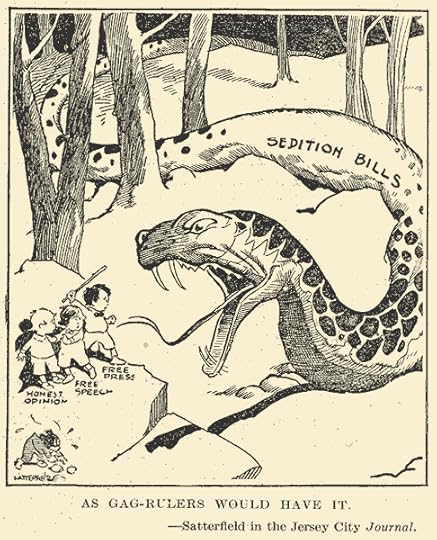
On May 16, 1918, the United States Congress passes the Sedition Act, a piece of legislation designed to protect America's participation in World War I.
Along with the Espionage Act of the previous year, the Sedition Act was orchestrated largely by A. Mitchell Palmer, the United States attorney general under President Woodrow Wilson. The Espionage Act, passed shortly after the U.S. entrance into the war in early April 1917, made it a crime for any person to convey information intended to interfere with the U.S. armed forces' prosecution of the war effort or to promote the success of the country's enemies.
Aimed at socialists, pacifists and other anti-war activists, the Sedition Act imposed harsh penalties on anyone found guilty of making false statements that interfered with the prosecution of the war; insulting or abusing the U.S. government, the flag, the Constitution or the military; agitating against the production of necessary war materials; or advocating, teaching or defending any of these acts. Those who were found guilty of such actions, the act stated, shall be punished by a fine of not more than $10,000 or imprisonment for not more than twenty years, or both. This was the same penalty that had been imposed for acts of espionage in the earlier legislation.
Though Wilson and Congress regarded the Sedition Act as crucial in order to stifle the spread of dissent within the country in that time of war, modern legal scholars consider the act as contrary to the letter and spirit of the U.S. Constitution, namely to the First Amendment of the Bill of Rights. One of the most famous prosecutions under the Sedition Act during World War I was that of Eugene V. Debs, a pacifist labor organizer and founder of the International Workers of the World (IWW) who had run for president in 1900 as a Social Democrat and in 1904, 1908 and 1912 on the Socialist Party of America ticket.
After delivering an anti-war speech in June 1918 in Canton, Ohio, Debs was arrested, tried and sentenced to 10 years in prison under the Sedition Act. Debs appealed the decision, and the case eventually reached the U.S. Supreme Court, where the court ruled Debs had acted with the intention of obstructing the war effort and upheld his conviction. In the decision, Chief Justice Oliver Wendell Holmes referred to the earlier landmark case of Schenck v. United States (1919), when Charles Schenck, also a Socialist, had been found guilty under the Espionage Act after distributing a flyer urging recently drafted men to oppose the U.S. conscription policy. In this decision, Holmes maintained that freedom of speech and press could be constrained in certain instances, and that The question in every case is whether the words used are used in such circumstances and are of such a nature as to create a clear and present danger that they will bring about the substantive evils that Congress has a right to prevent.
Debs' sentence was commuted in 1921 when the Sedition Act was repealed by Congress. Major portions of the Espionage Act remain part of United States law to the present day, although the crime of sedition was largely eliminated by the famous libel case Sullivan v. New York Times (1964), which determined that the press's criticism of public officials—unless a plaintiff could prove that the statements were made maliciously or with reckless disregard for the truth—was protected speech under the First Amendment.
(Source: http://www.history.com/this-day-in-hi...)
More:
http://en.wikipedia.org/wiki/Sedition...
http://www.firstworldwar.com/source/e...
http://www.seditionproject.net/index....
http://nashvillepost.com/news/2007/8/...
http://www.conservapedia.com/Sedition...
 by
by
 Geoffrey R. Stone
Geoffrey R. Stone by Stephen M. Kohn (no photo)
by Stephen M. Kohn (no photo) by Paul L. Murphy (no photo)
by Paul L. Murphy (no photo) by William Preston Jr. (no photo)
by William Preston Jr. (no photo)(no image) The Wilson Administration and Civil Liberties, 1917-1921 by Harry N. Scheiber (no photo)
(no image) Civil Liberties In Wartime: Legislative Histories Of The Espionage Act Of 1917 And The Sedition Act Of 1918 by William H. Manz (no photo)
 Kate Richard O'Hare
Kate Richard O'Hare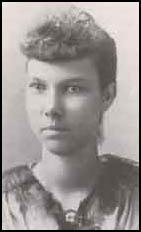
Kate Richards was born on March 26, 1876 to Andrew and Lucy Richards, farmers in Central Kansas. A drought in 1887, combined with the cumulative effects of the economic depression of the 1870s, completely devastated the family. Forced off their farm, the family moved to a poverty stricken area of Kansas City, where Andrew Richards barely made enough money for the family to survive.
In 1894, Kate found work as a machinist in a small Kansas City machine shop. During this year, she also met prominent socialist Mother Jones, who introduced her to Kansas City socialists and gave her books regarding socialism. This was followed in 1895 by a meeting with Eugene V. Debs, another noted socialist. In 1899, she and her father founded the Socialist Labor Party, although she later left the organization. In 1901, she was a founding member of the Socialist Party in America; she also met her future husband, Frank P. O'Hare, an Iowa born socialist from St. Louis. They were wed in January 1902, and then set out on a national lecturing and organizing tour. They eventually moved to Oklahoma in 1904, and operated a small farm there until 1908, when the family moved back to Kansas City with their four young children.
During her years in Kansas City, O'Hare remained a vocal and active supporter of socialism. She toured many southwestern states, often for the length of an entire summer. Her popularity was said to be second only to Eugene Debs himself. She also became a militant supporter of women's suffrage. She served as grand marshal for a suffrage parade in Washington, D.C. in 1913. Both in 1910 and in 1916, she ran for political office, even though women did not have the right to vote.
Kate Richards O'Hare was strongly opposed to United States entry into World War I. She toured throughout the nation, presenting a speech entitled "Socialism and the War." On July 17, 1917, she addressed a crowd in Bowman, North Dakota. The Bowman speech was the 76th time she had given the address. This time, however, she was arrested under the auspices of the 1917 Espionage Act. She was tried and convicted before a court in Bismarck, North Dakota, and was sentenced to five years in prison, to begin on April 15, 1919. In May 1920, her sentence was commuted and she was set free.
She remained active in her post-prison years. She led a march to Washington D.C. in 1922 to protest the treatment of opponents of the war, helped to organize a socialist college in Arkansas in 1925 and was active in Upton Sinclair's "End Poverty in California" campaign in 1928. She was especially active in the area of prison reform. She made her greatest contribution to that field in the state of California, where she was appointed Director of Penology. She directed many reforms of that state's penal system.
Kate Francis O'Hare died on January 12, 1948 at the age of 71.
(Source: http://webapp.und.edu/dept/library/Co...)
More:
http://www.spartacus.schoolnet.co.uk/...
http://en.wikipedia.org/wiki/Kate_Ric...
http://womhist.alexanderstreet.com/kr...
http://digital.library.okstate.edu/en...
http://historymatters.gmu.edu/d/43/
 by Sally M. Miller (no photo)
by Sally M. Miller (no photo) by Peter H. Buckingham (no photo)
by Peter H. Buckingham (no photo) by Suzanne H. Schrems (no photo)
by Suzanne H. Schrems (no photo)(no image) In Prison by Kate Richards O'Hare (no photo)
(no image) Kate Richards O'Hare: Selected Writings and Speeches by Kate Richards O'Hare (no photo)
 Rose Pastor Stokes
Rose Pastor Stokes
Born Rose Harriet Wieslander in Augustova, Poland, on July 18, 1879, she was the first child of a loveless marriage. At age three, she moved to England with her mother, leaving her father (whom she knew only as “Jacob the Learned Bootmaker”) and the pogrom-threatened shtetl behind. Living with relatives in the squalid slums of London’s East End, Rose was compelled by necessity to leave school at age eight and join the workforce. In England Rose’s mother, Hindl, married Israel Pastor, who soon decided to resettle the family in America. In 1890, Hindl, Rose, and the new baby Maurice joined Pastor in Cleveland, where Rose found work in a “buck-eye,” the cigar-sweatshop in which many Jews labored. She worked as an unskilled “stogey-roller” for twelve years. After Israel Pastor abandoned the family, she became the sole supporter of six. For those who later popularized her character in the media, this period of her life often faded to an idealized working-class experience, but for Rose herself, it stood out as formative for her identity.
Her love of reading impelled her to respond to a call for letters in the Yidishes Tageblat [Jewish daily news]. In 1901, her first letter was published on the Tageblat’s English page, and she soon became a regular contributor. Her column gained such popularity that the editor offered her a full-time position as a resident columnist in New York City for the enticing salary of $15 per week. She settled in the Lower East Side in January 1903, within a few months joined by her mother and some of her siblings.
Her work at the Tageblat provided her with a forum to explore political themes and brought her into contact with ghetto intelligentsia. It was also through the Tageblat that she met her future husband. As part of a series on settlement workers, Rose interviewed James Graham Phelps Stokes, a reform-minded millionaire from a prominent family. After the publication of this interview, Pastor and Stokes became fast friends. Their relationship took a more intimate turn at the end of the summer of 1904, and they began to discuss marriage.
The news of this unlikely engagement broke on the front page of the New York Times on April 6, 1905, with a headline reading “J. G. Phelps Stokes to Wed Young Jewess—Engagement of Member of Old New York Family Announced—Both Worked on East Side.” The article sensationalized the romantic story and the sharp contrasts in background between the two, calling her the “Cinderella of the sweatshops.”
Although the great disparity in class background between Pastor and Stokes was to become the central—and divisive—issue in the course of their marriage as well as in historical hindsight, the issue of religion provoked the most concern at the time of their engagement. The class distinction between them, however, constituted material for romantic fantasy. A love that overcame social barriers appealed to the public as a living fairy tale, as well as an example of the classic American success story.
From the first time that Stokes and Pastor discussed marriage, they determined to remain in the world of the Lower East Side, yet she joined his world of philanthropic reformism. Both quickly became disillusioned with settlement work, however, and in 1906, they joined the Socialist Party of America. She became one of the most prominent speakers on the Intercollegiate Socialist Society tour.
Stokes defined her new role as the voice of the worker, with the responsibility to use her newfound influence to help the working class. Although she stated, “I believe ... that the Jewish people, because of the ancient and historic struggle for social and economic justice, should be fitted to recognize a special mission in the cause of the modern Socialist movement,” she resisted ethnic specificity and association with Jewish organizations, defining allegiance only along class lines.
After devoting herself to the lecture circuit for ten years, Stokes applied her political energy to labor activism and to organizations outside the formal structure of the Socialist Party. She led the movement in support of Patrick Quinlan, a strike leader of the radical Industrial Workers of the World. In New York in 1912, she spearheaded a campaign to organize chambermaids into a branch of the International Hotel Workers’ Union and to encourage them to strike. Stokes also garnered a great deal of attention for her birth control activism, serving as a leader of the groups that agitated in support of Margaret Sanger during the time of her arrest and trial, and writing two pro–birth control plays, The Woman Who Wouldn’t and Shall the Parents Decide (cowritten with Alice Blache). Stokes became involved in the cause of birth control because it provided a means of doing direct, concrete work for the benefit of the working class. Her distinctive position made her particularly successful in this cause, for her working-class background gave her argument a personal legitimacy, while her upper-class position protected her from arrest.
Public attention to Stokes reached its peak over her antiwar activism, culminating in her arrest on March 22, 1918, for an antiwar speech in Kansas City, Missouri, and a letter to the local paper in which she declared, “No government which is for the profiteers can also be for the people, and I am for the people, while the government is for the profiteers.” Stokes’s conviction was appealed twice before the decision was reversed in March 1920, on the grounds that the charge to the jury was prejudicial against the defendant.
The arrest and trial of Stokes attracted a great deal of notoriety and only exacerbated the tension within her marriage, which ended in divorce in 1926. Stokes had moved toward a radicalism increasingly incompatible with her husband’s position as a millionaire socialist. She was present at the 1919 socialist convention in Chicago, at which the Communist Party of America was founded, and she held a position on the CP Central Executive Committee. As an American delegate to the Comintern’s Fourth World Congress in Moscow in 1922, Stokes submitted a minority report on the “Negro question.” Although she had been wary of separate organizations for women during her involvement in the Socialist Party, she began to advocate a special organization for women in the Communist Party and took on the job of managing the Women’s Work Department of the Central Executive Committee.
While she remained devoted to radical activism, the last ten years of Stokes’s life were filled with emotional and financial strain. Making no financial demands on her ex-husband except for a monthly stipend for her mother, Stokes depended on her writing as her primary source of income. She remarried in 1927, to Jerome Isaac Romain (who later changed his name to Victor J. Jerome), a Russian-Polish Jew active in the Communist Party. Due to their financial needs, Romain lived and worked in New York, while Stokes remained at her house in Westport, Connecticut, taking care of Romain’s young son and continuing her political activism.
In 1930, Stokes was diagnosed with a malignant breast tumor, which she attributed to having received a blow on the breast from a policeman’s club during a demonstration—claiming martyrdom for the proletarian cause. Her health rapidly declined; even so, she maintained her radical, fighting spirit. Although her illness prevented her from remaining active in the Communist Party during the last years of her life, she continued to assert her allegiance to it. On June 20, 1933, she died in Germany, where she had sought medical care at an experimental clinic.
Stokes’s complicated identity continued to confound historians, writers, and thinkers after her death. Some have located her importance in her sensational marriage, emphasizing her connection to the Phelps-Stokes family over and above her political significance and activism. In contrast, the Communist Party, as the custodian of her memory after her death, sought to construct from her character and experiences a model for the party that fit neatly—more neatly than Stokes did herself during her lifetime—into party ideology.
Stokes used her autobiography, which she began in 1924, as a forum to negotiate these tensions in her identity, rewriting her own background and balancing the visions that others had of her life and mission. When she became too ill to continue writing, she entrusted the project of its completion to Samuel Ornitz, a communist writer, friend, and later member of the blacklisted Hollywood Ten, who finally abandoned it in 1937. In her autobiography as in her life, Stokes fused American values of self-improvement with immigrant and socialist ideals of community.
(Source: http://jwa.org/encyclopedia/article/s...
More:
http://en.wikipedia.org/wiki/Rose_Pas...
http://www.spartacus.schoolnet.co.uk/...
https://www.marxists.org/subject/wome...
http://drs.library.yale.edu:8083/HLTr...
 by Arthur Zipser (no photo)
by Arthur Zipser (no photo) by Herbert Shapiro (no photo)
by Herbert Shapiro (no photo) by Morris Rosenfeld (no photo)
by Morris Rosenfeld (no photo) by Joyce Antler (no photo)
by Joyce Antler (no photo)(no image) The Woman who Wouldn't by Rose Pastor Stokes (no photo)
 U.S. v. Eugene Debs
U.S. v. Eugene Debs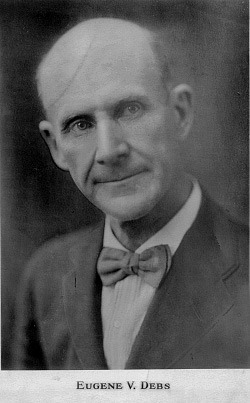
The Debs Federal Court Trial (U.S. v. Eugene V. Debs) in Cleveland resulted from an antiwar speech that the Socialist leader gave in Canton, OH, on 16 June 1918. Debs was charged with violation of the Espionage Act. The trial, which took place in Judge David C. Westenhaver's court from 9-12 Sept. 1918, captured national interest. U.S. District Attorney Edward S. Wertz, assisted by Francis B. Kavanagh and JOSEPH C. Breitenstein, was in charge of the government's case; Debs was represented by Seymour Stedman, William A. Cunnea, Joseph Sharts, and Morris Wolf; Charles Ruthenberg was among the chief witnesses.
The trial centered around the content of Debs's Canton speech. In the speech, Debs espoused freedom of speech and the goals of international socialism, denounced war, expressed solidarity with the Bolsheviks, and praised the Industrial Workers of the World (IWW). The antiwar sentiments around which the prosecution built its case were focused on one sentence: "The master class has always declared the wars, the subject class has always fought it." No witnesses were called for the defendant; rather, Debs defended his actions directly to the jury. The jury found him guilty on 3 counts: attempting to incite insubordination, disloyalty, mutiny, and refusal of duty in the armed forces of the U.S.; obstructing and attempting to obstruct the recruiting and enlistment service; and uttering language to incite, provoke, and encourage resistance to the U.S. Judge Westenhaver sentenced Debs to 10 years' imprisonment pending an appeal to the Supreme Court, which upheld Deb's conviction. Debs was pardoned by Pres. Warren Harding in 1921.
(Source: http://ech.case.edu/cgi/article.pl?id...)
More:
http://en.wikipedia.org/wiki/Debs_v._...
http://www.marxists.org/history/usa/p...
http://debs.indstate.edu/e13t7_1918.pdf
http://law2.umkc.edu/faculty/projects...
http://www.oyez.org/cases/1901-1939/1...
 by Nick Salvatore (no photo)
by Nick Salvatore (no photo) by Ray Ginger (no photo)
by Ray Ginger (no photo) by Ernest Freeberg (no photo)
by Ernest Freeberg (no photo) by David Karsner (no photo)
by David Karsner (no photo)(no image) The Wilson Administration and Civil Liberties, 1917-1921 by Harry N. Scheiber (no photo)
 Gutzon Borglum
Gutzon Borglum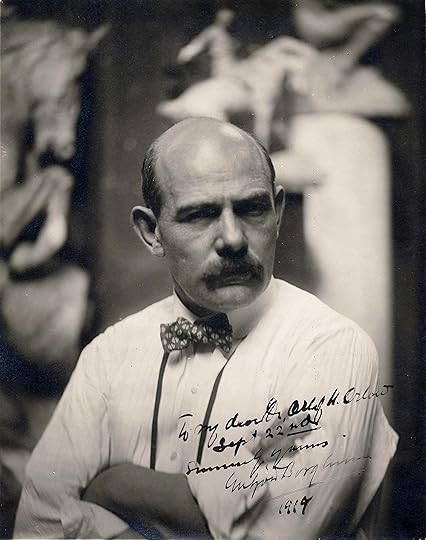


BORGLUM, JOHN GUTZON DE LA MOTHE (1867–1941). Gutzon Borglum, painter and sculptor, was born in Idaho on March 25, 1867, the son of Danish immigrants James and Ida (Michelson) Borglum. He first studied art in California under William Keith and Virgil Williams. There the large painting Stagecoach, now in the Menger Hotel in San Antonio, was completed. In 1890 Borglum went abroad to study for two years in Paris at the Académie Julien and the École des Beaux Arts and also under individual masters, the most important of whom was Auguste Rodin. Borglum exhibited in the Old Salon in 1891 and 1892 as a painter and in 1891 in the New Salon as a sculptor with Death of the Chief, for which he was awarded membership in the Société des Beaux-Artes.
After a year of work in Spain he returned to California, in 1893, and from there went to England in 1896. In England he painted portraits and murals, illustrated books, and produced sculpture. Apache Pursued, executed at this time, is owned in replica by the Witte Museum in San Antonio. Sculpture became Borglum's prime artistic medium; examples of his work include the head of Lincoln (1908) at the Capitol in Washington, D.C., a seated bronze sculpture of Lincoln (1911) in Newark, New Jersey, two equestrian statues of Philip H. Sheridan (1907, 1924), and the Wars of America group (1926). The most famous and monumental of his works are the sculptures at Mount Rushmore National Memorial, South Dakota, of Washington, Jefferson, Lincoln, and Theodore Roosevelt. These were dedicated on August 10, 1927, and completed, after Borglum's death, by his son Lincoln.
In 1925 the sculptor moved to Texas to work on the monument to trail drivers commissioned by the Trail Drivers Association. He completed the model in 1925, but due to lack of funds it was not cast until 1940, and then was only a fourth its originally planned size. It stands in front of the Texas Pioneer and Trail Drivers Memorial Hall next to the Witte Museum in San Antonio. Borglum lived at the historic Menger Hotel, which in the 1920s was the residence of a number of artists. He subsequently planned the redevelopment of the Corpus Christi waterfront; the plan failed, although a model for a statue of Christ intended for it was later modified by his son and erected on a mountaintop in South Dakota. While living and working in Texas, Borglum took an interest in local beautification. He promoted change and modernity, although he was berated by academicians.
Borglum was married to Mrs. Elizabeth Putnam in 1889; the marriage ended in divorce in 1908. On November 6, 1941, Borglum died in Chicago, Illinois, survived by his wife, Mary (Montgomery), and his two children. He was buried in Forest Lawn Memorial Park, Glendale, California.
(Source: http://www.tshaonline.org/handbook/on...)
More:
http://en.wikipedia.org/wiki/Gutzon_B...
http://www.pbs.org/wgbh/amex/rushmore...
http://xroads.virginia.edu/~ug97/ston...
http://www.nps.gov/moru/historycultur...
http://www.smithsonianmag.com/history...
 by John Taliaferro (no photo)
by John Taliaferro (no photo)(no image) My Father's Mountain by Lincoln Borglum (no photo)
(no image) Six Wars at a Time: The Life and Times of Gutzon Borglum, Sculptor of Mt. Rushmore by Howard Shaff (no photo)
(no image) Gutzon Borglum: The Man Who Carved a Mountain by Willadene Price (no photo)
 John K. Shields
John K. Shields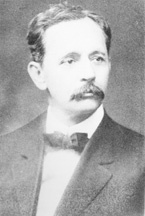
John Knight Shields (August 15, 1858 – September 30, 1934) was a Democratic United States Senator from Tennessee from 1913 to 1925.
Shields was born at his family's estate "Clinchdale", near the early pioneer settlement of Bean's Station, Tennessee in Grainger County. His education as a youth was by private tutors, a sign of the family's affluence. He studied law and was admitted to the Tennessee bar in 1879. He practiced in the counties surrounding his home until 1893, when he was named Chancellor of the former 12th Chancery Division. The next year, he resumed private practice in nearby Morristown, in Hamblen County.
In 1902 Shields became an Associate Justice of the Tennessee Supreme Court, an office which he held until 1910 when he was named Chief Justice. He resigned that post in 1913, becoming the last Tennessean elected to the U.S. Senate by the Tennessee General Assembly prior to the 17th Amendment coming into effect. Shields was popularly reelected in 1918 but in 1924 lost the Democratic nomination to Lawrence Tyson, and returned to the private practice of law, this time in Knoxville.
While in the Senate, Shields served as the chairman of several committees. He chaired the Committee on Canadian Relations in the 63rd and 64th Congresses, the Committee on Interoceanic Canals in the 65th Congress, and the Committee on the Sale of Meat Products in the 66th Congress.
Shields died at his estate "Clinchdale" and is buried in Knoxville's Memorial Cemetery.
(Source: http://en.wikipedia.org/wiki/John_K._...)
More:
http://bioguide.congress.gov/scripts/...
 Thomas W. Hardwick
Thomas W. Hardwick
Thomas William Hardwick was born on December 9, 1872, in Thomasville to Zemula Schley Matthews and Robert W. Hardwick. In 1892 he graduated from Mercer University in Macon. A year later he left the University of Georgia's Lumpkin Law School with a law degree and was admitted to the Georgia bar. In 1894 he married Maude Perkins, and together they had one daughter, Mary. His wife died in 1937, and the following year Hardwick married Sallie Warren West.
Hardwick ran his own law practice from 1893 to 1895, when he became the Washington County prosecutor. In 1897 he ran for the Georgia House of Representatives and served as a legislator for the next four years, until he won a seat in the U.S. House, where he served his district until 1914.
When U.S. senator Augustus O. Bacon died in office, Hardwick took his seat in a special election in 1914 and stayed for five years in the U.S. Senate, where he became known for his opposition to U.S. president Woodrow Wilson's war-preparedness legislation. William J. Harris subsequently defeated Hardwick in the 1918 Democratic primary.
In spring 1919 Hardwick, along with several other national politicians and judges, as well as several Catholic churches, was the target of a mail bomb. He was not injured, but his housekeeper, who opened the package, was maimed. The U.S. attorney general, A. Mitchell Palmer, ordered the detention of 4,000 suspected Communists (mainly immigrants from the Soviet Union) in what was called the Palmer Raids.
They were held without bail, and many were deported without trials. The raids continued throughout the year and extended to union halls, homes, and anywhere socialist sympathizers or revolutionaries were thought to be gathered. In all, around 10,000 people were rounded up before the raids ended in 1920.
In 1921 Hardwick rebounded to win the Georgia governor's office, a position he held until 1923. Although he had led efforts to disenfranchise Georgia blacks at the turn of the twentieth century, as governor Hardwick proved to be somewhat more progressive. He opposed the rise of the new Ku Klux Klan and advocated prison reform, issuing an executive order that ended the common practice of flogging inmates.
Hardwick also passed Georgia's first gas tax to build new roads and pushed for a graduated state income tax, which would not be adopted until 1931. Yet he was most noted for selecting Rebecca Latimer Felton as the first woman to the U.S. Senate. Motivated partly for selfish reasons, Hardwick made the appointment after Thomas E. Watson died in office. He wanted to run for Watson's seat and hoped that appointing a woman, who would not even serve in office due to the fact that Congress was out of session, would make his road back to the Senate easier by winning him women's votes. Instead, Hardwick lost the election to Walter F. George, who waited to take his new seat so that Felton could be sworn in as the first female senator, even though her term lasted only twenty-four hours.
In the 1922 gubernatorial campaign, Clifford Walker, a supporter of the Ku Klux Klan, defeated Hardwick. Hardwick spent the following year as a special assistant to the U.S. attorney general. In 1924 Hardwick again lost a Senate election, and in 1932 he lost his bid for governor in the Democratic primary. Later, he provided legal representation to the Soviet ambassador to the United States and urged the U.S. government to recognize the Soviet Union.
Hardwick maintained a law practice in Atlanta, Sandersville, and Washington, D.C., until his death from a heart attack on January 31, 1944. He was buried in the Old City Cemetery in Sandersville, where a state historical marker stands in his honor at the courthouse square.
(Source: http://www.georgiaencyclopedia.org/ng...)
More:
http://en.wikipedia.org/wiki/Thomas_W...
http://bioguide.congress.gov/scripts/...
http://russelldoc.galib.uga.edu/russe...
 by James F. Cook (no photo)
by James F. Cook (no photo)(no image) Senators From Georgia by Josephine Mellichamp (no photo)
 Third Battle of the Aisne
Third Battle of the Aisne
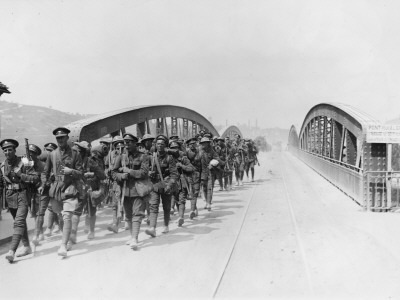
In the early morning hours of May 27, 1918, the German army begins the Third Battle of the Aisne with an attack on Allied positions at the Chemin des Dames ridge, in the Aisne River region of France.
By mid-May 1918, General Erich Ludendorff, mastermind of the ambitious German offensive—known as the Kaiserschlacht, or the "kaiser's battle"—launched that spring, was determined to reclaim Chemin des Dames from the French with a forceful, concentrated surprise attack on the strategically crucial ridge. There had been two previous battles in the Aisne region, in 1914 and 1917, but both had been offensives by the Allies—predominately the French—against the Germans; the second was part of the failed Nivelle Offensive, named for Robert Nivelle, the French commander in chief who was summarily replaced in the wake of the offensive's disastrous outcome. Nivelle's successor, Phillipe Petain, was aware of the likelihood of a German attack at the Chemin des Dames in 1918, but he failed to anticipate its strength and scale.
In the early morning hours of May 27, 4,000 German guns opened fire on a 24-mile-long stretch of the Allied lines, beginning the Third Battle of the Aisne. The Germans advanced 12 miles deep through the French sector of the lines near Chemin des Dames, demolishing four entire French divisions. Four more French and four British divisions fell between the towns of Soissons and Reims, as the Germans reached the Aisne in less than six hours. By the end of the day, Ludendorff's men had driven a wedge 40 miles wide and 15 miles deep through the Allied lines.
Earlier that month, the political and military chiefs of France and Britain had invested supreme control over their joint military strategy on the Western Front to Ferdinand Foch, chief of the French general staff. Foch's control over the other commanders in chief proved relatively limited in this instance, however, as he was unable to force Britain's Douglas Haig to transfer more than five British divisions to relieve French troops. The Germans were not as successful elsewhere on the Western Front, however, as an Allied force including some 4,000 Americans scored a major victory at Cantigny, on the Somme River, on May 28. Even as the German spring offensive continued in force, the Allied defense was stiffening, and as the summer of 1918 began, Petain, Foch and the rest of the Allied commanders began to shift their focus to counterattacks, knowing the outcome of World War I hung in the balance.
(Source: http://www.history.com/this-day-in-hi...)
More:
http://en.wikipedia.org/wiki/Third_Ba...
http://www.spartacus.schoolnet.co.uk/...
http://www.gutenberg.org/files/15937/...
http://www.chemindesdames.fr/default....
 by Martin Marix-Evans (no photo)
by Martin Marix-Evans (no photo) by
by
 Peter Hart
Peter Hart by Martin Gilbert (no photo)
by Martin Gilbert (no photo) by
by
 John Keegan
John Keegan by Mark Ethan Grotelueschen (no photo)
by Mark Ethan Grotelueschen (no photo) by James H. Hallas (no photo)
by James H. Hallas (no photo)
 The Battle of Château-Thierry
The Battle of Château-Thierry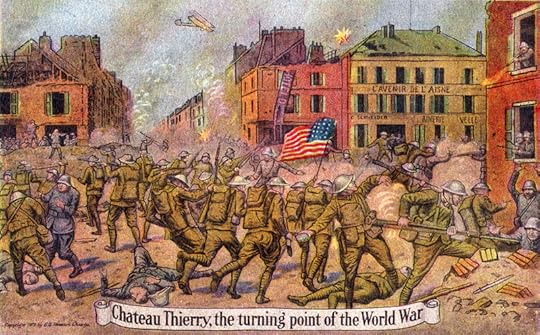

The Battle of Château-Thierry of 3-4 June 1918 was part of the Allied response to the German Aisne offensive of 27 May-7 June 1918 (First World War). That offensive had seen the Germans advance thirteen miles on the first day, the largest single day advance since 1914. Over the next few days the Germans had reached the Marne at Château-Thierry, thirty seven miles from Paris.
Although General John Pershing, the commander of the American expeditionary force in France was committed to the idea of concentrating his troops in a single army, in the crisis caused by the German offensives he agreed to the deployment of the 2nd and 3rd American Divisions. The 3rd Division was sent to Château-Thierry to defend the bridges over the Marne.
The Americans reached Château-Thierry on 1 June and held off the final German attacks of the Aisne offensive. Having protected the bridges at Château-Thierry, the American 3rd Division then took part in a counter-attack against German forces that had crossed the Marne further east, at Jaulgonne. On 3-4 June the Americans, supported by a number of French troops, pushed the Germans back across the river.
The battle of Château Thierry was the second American victory of the war, coming only three days after the first, at Cantigny on 28 May. A further success would follow at Belleau Wood later in June. These early American successes played an important role in the eventual Allied victory as the seemingly endless stream of fresh American troops began to destroy German morale.
(Source: http://www.historyofwar.org/articles/...)
More:
http://en.wikipedia.org/wiki/Battle_o...
http://web.archive.org/web/2003122618...
http://www.usaww1.com/American-Expedi...
http://www.abmc.gov/memorials/memoria...
http://www.worldwar1.com/dbc/ct_dm.htm
 by David Bonk (no photo)
by David Bonk (no photo) by Jessie Graham Flower (no photo)
by Jessie Graham Flower (no photo) by John W. Thomason (no photo)
by John W. Thomason (no photo) by John R Mendenhall (no photo)
by John R Mendenhall (no photo)(no image) When the tide turned; the American attack at Chateau Thierry and Belleau Wood in the first week of June, 1918 by Otto Hermann Kahn (no photo)
 The Battle of Belleau Wood
The Battle of Belleau Wood
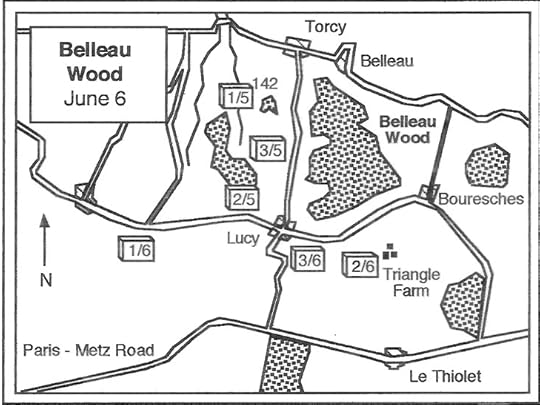

The battle fought in Belleau Wood (June 1918) was the first real taste of battle for the US Marines in World War One with General Pershing calling Belleau Wood the most important battle fought by US forces since the US Civil War. The Battle of Belleau Wood was part of the Allied drive east away from an axis from Amiens to Paris in what was a response to the German Spring Offensive in 1918.
During the Spring Offensive, the Germans had come dangerously close to breaking the Allied lines protecting Amiens and Paris. Ludendorff’s force was strengthened by a huge influx of experienced German soldiers who had fought in Russia. However, as a result of the Treaty of Brest-Litovsk (1917), Russia had pulled out of World War One and Germany, therefore, could move her soldiers to the Western Front. The German push, ironically, was so successful that those at the front – Stormtroopers who had done so much damage to the Allied front line – could not be supplied and their advance slowed to a halt short of Amiens. Along the line of advance, however, the Germans had constructed heavily defended positions that while in place threatened cities such as the major rail hub at Amiens and Paris itself. One such place was Belleau Wood.
The task of clearing Belleau Wood was given to the 2nd and 3rd Divisions of the US Army. Half of the 2nd Division was made up of units of the US Marines (the 4th Marine Brigade, which comprised of the 5th and 6th Marine Regiments).
To get to the woods, the Marines had to cross wheat fields and meadows. The Germans had placed their machine guns in a way that they could continuously sweep these fields with accurate and high intensity fire. The Marines had to launch six attacks on German positions in Belleau Wood that were for the most part difficult to identify in an initial attack because they were so well positioned. The wood itself was also made up of closely packed trees that made any advance difficult in the extreme.
Caught in the open fields or in the densely packed wood, French officers advised the Marines to turn back. This they refused to do. US Marine Captain Lloyd Williams said in response to this, “Retreat? Hell, we just got here.”
US Marine casualties were the highest in the Corp’s history up to that date. However, once units got into the woods, the trees that hindered a swift advance also became a source of protection. Marine snipers could pick-off German machine gun posts with some ease. Once a machine gun fired, it gave away the position of the machine gun team. General Pershing was to state that “the deadliest weapon in the world is a Marine and his rifle.” Even a post-battle German report stated that the Marines marksmanship was “remarkable”.
By June 26th, the Marines confirmed that they had taken the entire woods. To clear the woods in their entirety, the Marines had frequently resorted to hand-to-hand fighting with bayonets and knives. Such was the ferocity of this that the Germans gave the Marines the nickname “Teufel Hunden”, which roughly translates as “Devil Dogs”.
The success of the US Marines in clearing such a strategically important place came at a cost. Out of the 9,777 US casualties, 1,811 were fatalities. No one is quite sure about German casualties because the end of the battle at Belleau Wood corresponded with a general German withdrawal along the whole front. Over 1,600 German prisoners were taken, so it is assumed that German casualties were high.
In terms of overall casualty figures, the casualties at the Somme and Verdun dwarf the number of deaths at Belleau Wood. However, the psychological damage the defeat had on the German military cannot be underestimated. The Germans were in a very well defended stronghold with a sweep of fire that was to prove deadly. Few in the German military hierarchy would have expected the woods to fall so quickly. Not only was the defeat of the Germans at Belleau Wood a major blow to the Germans it also proved to be a huge morale booster to the Allied forces that were still suffering from the onslaught that was the German Spring Offensive. After the battle, the French renamed Belleau Wood “Bois de la Brigade de Marine” – Wood of the Marine Brigade and the 4th Brigade was awarded the Croix de Guerre by the French in recognition of their achievement.
(Source: http://www.historylearningsite.co.uk/...)
More:
http://en.wikipedia.org/wiki/Battle_o...
http://militaryhistory.about.com/od/w...
http://www.defense.gov/News/NewsArtic...
http://www.firstworldwar.com/battles/...
http://www.youtube.com/watch?v=jlMV-c...
http://www.marines.com/videos/-/video...
http://www.mca-marines.org/gazette/ph...
 by David Bonk (no photo)
by David Bonk (no photo) by David J. Ulbrich (no photo)
by David J. Ulbrich (no photo) by J. Robert Moskin (no photo)
by J. Robert Moskin (no photo) by Robert B. Asprey (no photo)
by Robert B. Asprey (no photo) by Alan Axelrod (no photo)
by Alan Axelrod (no photo) by Dick Camp (no photo)
by Dick Camp (no photo) by Rexmond C. Cochrane (no photo)
by Rexmond C. Cochrane (no photo) by Louis C. Linn (no photo)
by Louis C. Linn (no photo) by Robert Wallace Blake (no photo)
by Robert Wallace Blake (no photo)
 The Battle of Saint-Mihiel
The Battle of Saint-Mihiel
the American Expeditionary Force (AEF) under the command of General John J. Pershing launches its first major offensive operation as an independent army during World War I.
After lending much-needed support to the exhausted French forces at Belleau Wood in June 1918 and in the Second Battle of the Marne in July, Pershing and Allied Supreme Commander Ferdinand Foch decided that the 1st Army of the AEF should establish its headquarters in the Saint-Mihiel sector and prepare a front facing the Saint-Mihiel salient, a triangular wedge of land between Verdun and Nancy, in northeastern France, that had been occupied by the Germans since the fall of 1914. By heavily fortifying the area, the Germans had effectively blocked all rail transport between Paris and the Eastern Front. In mid-August, the AEF was given the task of leading an attack on the salient; it would be its first independent operation of the war.
The attack began on September 12, 1918, with the advance of Allied tanks across the trenches at Saint-Mihiel, followed closely by the AEF’s infantry troops. Foul weather plagued the offensive as much as the enemy troops, as the trenches filled with water and the fields turned to mud, bogging down many of the tanks. Despite the conditions, the attack proved successful—in part because the German command made the decision to abandon the salient—and greatly lifted the morale and confidence of Pershing’s young army. By September 16, 1918, Saint-Mihiel and the surrounding area were free of German occupation. The American forces immediately shifted further south, to a new offensive near the Argonne Forest and the Meuse River, where they combined with British and French forces to further hammer the Germans, as the Allies moved ever closer to victory in World War I.
(Source: http://www.history.com/this-day-in-hi...)
More:
http://en.wikipedia.org/wiki/Battle_o...
http://www.spartacus.schoolnet.co.uk/...
http://www.au.af.mil/au/awc/awcgate/w...
http://www.worldwar1.com/dbc/stmihiel...
http://www.youtube.com/watch?v=jvxEtV...
http://www.shsu.edu/~his_ncp/Pershing...
http://iagenweb.org/greatwar/cemeteri...
 by David Bonk (no photo)
by David Bonk (no photo) by James H. Hallas (no photo)
by James H. Hallas (no photo) by Walter R McClure (no photo)
by Walter R McClure (no photo) by
by
 Carlo D'Este
Carlo D'Este(no image) The U.S. Air Service in World War I, Volume III: The Battle of St. Mihiel by Maurer Maurer (no phto)
 The Meuse-Argonne Offensive
The Meuse-Argonne Offensive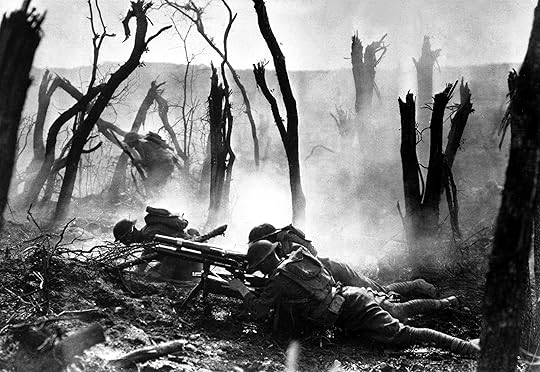
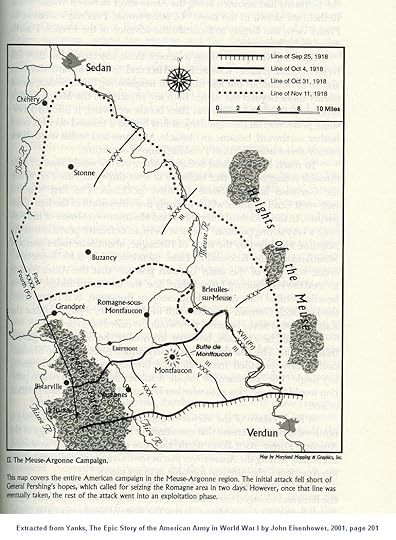
The Meuse-Argonne offensive, 26 September-11 November 1918, was the southern part of the great triple offensive that broke the German lines on the Western Front. It was also the biggest battle fought by the American Expeditionary Force during the war.
Ferdinand Foch’s plan called for three offensives aimed at forcing the Germans out of France and Belgium. In the north the Belgians, British and French would attack through Flanders. In the centre the British and Empire forces attacked the Hindenburg Line between Cambrai and St. Quentin. Finally to the south the French and Americans would attack between Reims and Verdun, along the Meuse and through the Argonne Forest.
The Meuse-Argonne offensive would be launched by the American First Army, under General John Pershing, and the French Fourth Army under General Henri Gourand. The Americans held the eastern part of the line, from Forges on the Meuse, north west of Verdun, to the centre of the Argonne Forest. The French Fourth Army then took over to Auberive to the Suippe, east of Reims. The Americans faced a very difficult task. The German lines were up to twelve miles deep, and had been under development since 1915. The second line was based on the hill of Montfaucon, the third line (the Hindenburg Line) on hills at Romagne. The entire area was hilly and wooded, cut by steep sided valleys, many running across the proposed line of advance.
The area was also badly supported by road and rail links. The Americans had only recently fought a battle at St Mihiel, (12-13 September 1918), east of Verdun, and Pershing had to transfer 600,000 men along three minor roads to reach his new front west of the city. The fighting at St. Mihiel had also inflicted heavy losses on some of Pershing’s best units, and so the attack in the Argonne had to be made with many fresh inexperienced troops.
The combined Franco-American attack began on the morning of 26 September. Over the first five days the French advanced nine miles, penetrating deeply into the German lines. The Americans did less well. Their attacks were enthusiastic, determined but not always well organised. Along the Meuse they were able to advance five miles, but in the Argonne forest they were only able to move two miles. By the start of October the divisions used in the initial assault were exhausted, and Pershing was forced to order a halt while new divisions replaced them in the line. During this period Foch came under great pressure from Clemenceau to replace Pershing, but Foch was well aware of the difficulties facing the Americans and stood his ground.
The second phase of the battle began on 4 October. The Americans launched a series of costly frontal assaults that finally began broke through the main German defences between 14-17 October. By the end of October the Americans had advanced ten miles and had finally cleared the Argonne Forest. On their left the French had advanced twenty miles, reaching the Aisne River.
The advance continued during the first eleven days of November. On 6 November the French Fourth Army and the US I corps were approaching Sedan, and the crucial Sedan-Metz railway line came under artillery fire, threatening a key German supply line. There was an element of confusion over which army would get the honour of capturing Sedan which saw the US 1st Division advance towards the city only to ordered to halt to allow the French to take the city, scene of a humiliating defeating during the Franco-Prussian War. The battle only ended with the final armistice, at 11.00 am on 11 November 1918.
The battle became known for the “lost battalion”. During the first phase of the battle, elements of two battalions from the 308th Infantry had become isolated in a steep sided gully between Bois d’Apremont and Charleveaux. The Germans held the ridgeline. From 2 October to 7 October the 650 men of the lost battalion held on against determined German attacks, suffering 450 casualties before they were finally relieved by the advancing 77th Division.
The battle was also noteworthy for the performance of three regiments from the American 93rd Division, manned by black soldiers. These regiments were operating with the French 161st Division, wore French uniforms and used French equipment. The US Army barely used its black regiments, having seemingly forgotten the lessons of the American Civil War where black soldiers had performed very well. In contrast the French had been using African troops throughout the war, and saw the 93rd Division as no different from other American troops. By 28 September all three regiments were heavily engaged in the fighting, taking part in the advance and capturing a series of villages. By the time they were relieved, the three regiments had suffered 2,246 casualties.
The Meuse-Argonne offensive cost the Americans 117,000 casualties, the French 70,000 and the Germans 100,000. The American casualties represented 40% of their total battlefield losses during the war. Amongst those losses were 48,909 dead. In a dreadful irony, the Spanish Influenza would eventually kill 53,000 American soldiers before the end of the war.
(Source: http://www.historyofwar.org/articles/...)
More:
http://en.wikipedia.org/wiki/Meuse-Ar...
http://en.wikipedia.org/wiki/American...
http://www.abmc.gov/cemeteries/cemete...
http://militaryhistory.about.com/od/w...
http://www.worldwar1.com/dbc/bigshow.htm
 by
by
 Edward G. Lengel
Edward G. Lengel by Robert H. Ferrell (no photo)
by Robert H. Ferrell (no photo) by William S. Triplet (no photo)
by William S. Triplet (no photo) by Paul F. Braim (no photo)
by Paul F. Braim (no photo) by Michael Clodfelter (no photo)
by Michael Clodfelter (no photo)
 Georges Clemenceau
Georges Clemenceau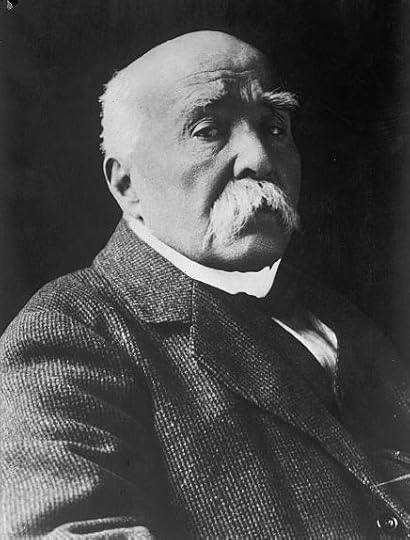
Georges Clemenceau was born in Mouilleron-en-Pareds, France, on 28th September, 1841. His mother, Sophie Eucharie Gautreau (1817-1903) was from a Huguenot family. His father, Benjamin Clemenceau (1810-1897) was a supporter of the 1848 Revolution and this ensured he grew up with strong republican views.
With a group of fellow students Clemenceau began publishing Le Travail. It was seized by the police and Clemenceau spent 73 days in prison. On his release he started a new journal, Le Matin, but this also got him into trouble with the authorities.
After finishing his medical studies he went to live in New York. He was impressed by the political freedom enjoyed by the people of the United States and considered settling permanently in the country. He found work as a schoolteacher in Stamford, Connecticut and eventually married one of his former students.
Clemenceau returned home in 1869 and established himself as a doctor in Vendée. When Germany defeated France in 1870 Clemenceau moved to Paris and once again became involved in radical politics. In February, 1871, Clemenceau was elected as a Radical Republican deputy in the National Assembly. He voted against the peace terms demanded by Germany and became involved in the insurrection known as the Paris Commune. After being re-elected to the National Assembly in 1876, Clemenceau emerged as the leader of the Radical-Republicans. As a result of his aggressive debating style, Clemenceau was given the nickname, 'The Tiger'.
In 1902 Clemenceau became a senator and four years later, at the age of 61, was appointed minister of home affairs. Now a right-wing nationalist, Clemenceau ruthlessly suppressed popular strikes and demonstrations. Seven months later Clemenceau became France's prime minister. His period in office (1907-10) was marked by his hostility to socialists and trade unionists.
On the outbreak of the First World War Clemenceau refused office as justice minister under the French prime minister, Rene Viviani. As editor of L'Homme Libre, Clemenceau became an outspoken opponent of Joseph Joffre, chief of general staff in the French Army. Clemenceau also accused the interior minister, Louis Malvy, of being a pacifist when it became known that he favoured a negotiated peace.
In November 1917 the French president, Raymond Poincare appointed Clemenceau as prime minister. He immediately clamped down on dissent and senior politicians calling for peace, such as Joseph Caillaux and Louis Malvy were arrested for treason. In a speech on 20th November 1917 Clemenceau said: "We promise you, we promise the country, that justice will be done according to the law. Weakness would be complicity. We will avoid weakness, as we will avoid violence. All the guilty before courts-martial. The soldier in the courtroom united with the soldier in battle. No more pacifist campaigns, no more German intrigues. Neither treason, nor semi-treason: the war. Nothing but the war. Our armies will not be caught between fire from two sides. Justice will be done. The country will know that it is defended."
Clemenceau, who also became minister of war in the government, and played an important role in persuading the British to accept the appointment of Ferdinand Foch as supreme Allied commander. He also insisted that the exhausted French Army led the offensive against the German Army in the summer of 1918.
At the Versailles Peace Conference Clemenceau clashed with Woodrow Wilson and David Lloyd George about how the defeated powers should be treated. Lloyd George told Clemenceau that his proposals were too harsh and would "plunge Germany and the greater part of Europe into Bolshevism." Clemenceau replied that Lloyd George's alternative proposals would lead to Bolshevism in France. At the end of the negotiations Clemenceau managed to restore Alsace-Lorraine to France but some of his other demands were resisted by the other delegates. Clemenceau, like most people in France, thought that Germany had been treated too leniently at Versailles.
Clemenceau's failure to achieve all his demands resulted in him being rejected by the French electorate in January 1920. After retiring from politics Clemenceau wrote his memoirs, The Grandeur and Misery of Victory. In the book Clemenceau warned of further conflict with Germany and predicted that 1940 would be the year of the gravest danger.
Georges Clemenceau died in Paris on 24th November, 1929.
(Source: http://www.spartacus.schoolnet.co.uk/...)
More:
http://en.wikipedia.org/wiki/Georges_...
http://www.musee-clemenceau.fr/en/
http://www.history.com/this-day-in-hi...
http://www.pbs.org/wgbh/amex/wilson/p...
http://wwi.lib.byu.edu/index.php/Clem...
 by David Robin Watson (no photo)
by David Robin Watson (no photo) by Gregor Dallas (no photo)
by Gregor Dallas (no photo) by Ted Gottfried (no photo)
by Ted Gottfried (no photo)(no image) Clemenceau and the 3rd Republic by John H. Jackson
(no image)The Tiger: The Life Of Georges Clemenceau, 1841 1929 by Edgar Holt (no photo)
(no image) The Surprises Of Life by Georges Clemenceau (no photo)
 Vittorio Emanuele Orlando
Vittorio Emanuele Orlando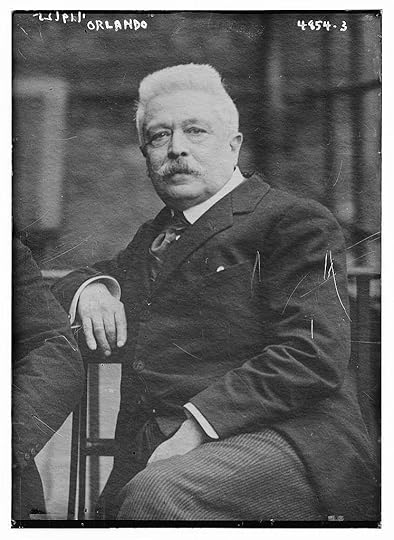
Born on 19 May 1860, Orlando was raised in Palermo, Sicily. Aside from his prominent political role Orlando is also renowned for his 100+ writings on legal and judicial issues; Orlando was himself a professor of law.
From 1903-05 Orlando served as Minister of Education under King Victor Emanuel III. In 1907 he was appointed Minister of Justice, a role he retained until 1909; he was subsequently re-appointed to the same ministry in November 1914 until his appointment as Minister of the Interior in June 1916.
The following year, on 30 October 1917, saw Orlando's appointment as Prime Minister, coming fresh in the wake of the disastrous campaign at Caporetto. Always a strong proponent of Italy's role in the war, Orlando was encouraged in his support of the Allies on the basis of secret promises made by the latter promising significant Italian territorial gains in Dalmatia (at the 1915 Treaty of London).
With his appointment as Prime Minister having boosted national morale, Orlando replaced Cadorna as Chief of Staff with Diaz. The following year consequently saw Italian success at Vittorio Veneto.
Prime Minister until the end of the war, Orlando headed the Italian contingent at the Paris Peace Conference in 1919. Unable however to obtain the expected territorial concessions - he ran up against U.S. President Wilson's policy of national self-determination, particularly with regard to Fiume - he dramatically left the conference early, in April 1919, returning only to sign the resultant treaty the following month.
His political position seriously undermined by his apparent failure to secure Italian interests at the Paris Peace Conference, Orlando resigned from office on 19 June 1919. He was succeeded as Premier by Franceso Nitti.
In December of the same year Orlando was elected president of the Chamber of Deputies. He was an early supporter of Benito Mussolini's fascist government upon its inception in 1922, although he withdrew his support two years later following the political murder of the prominent socialist leader Giacomo Matteotti.
In 1927 Orlando resigned from the Chamber of Deputies, serving thereafter in the Constituent Assembly. He devoted increasing time to writing and teaching.
With Mussolini's fall Orlando became leader of the Conservative Democratic Union. He was elected president of the Constituent Assembly in June 1946, although reservations about the peace treaty brought about his resignation in 1947.
The following year saw his election to the new Italian Senate; the same year he was a candidate for the presidency of the republic (elected by Parliament) but was defeated by Luigi Einaudi.
He died on 1 December 1952 in Rome.
(Source: http://www.firstworldwar.com/bio/orla...)
More:
http://en.wikipedia.org/wiki/Vittorio...
http://www.historylearningsite.co.uk/...
http://www.history.com/this-day-in-hi...
http://www.historyandtheheadlines.abc...
http://digitalservices.scranton.edu/c...
 by Spencer M. Di Scala (no photo)
by Spencer M. Di Scala (no photo) by Margaret MacMillan (no photo)
by Margaret MacMillan (no photo) by Mark F. Gilbert (no photo)
by Mark F. Gilbert (no photo) by R.G. Grant (no photo)
by R.G. Grant (no photo) by Louise Chipley Slavicek (no photo)
by Louise Chipley Slavicek (no photo)
 Henry Ashurst
Henry Ashurst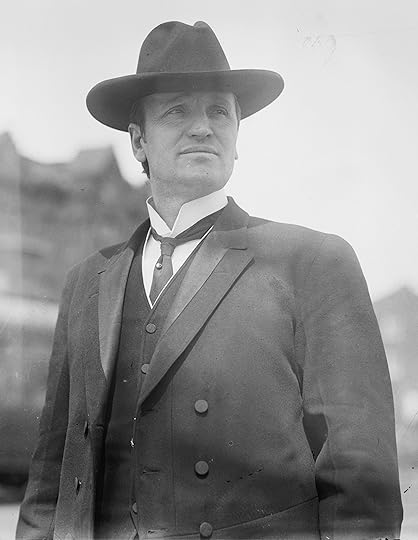
ASHURST, Henry Fountain, a Senator from Arizona; born in Winnemucca, Humboldt County, Nev., September 13, 1874; moved with his parents to Arizona in 1875 and settled near the present town of Flagstaff, Coconino County; attended the public schools of Flagstaff and graduated from the Stockton (Calif.) Business College in 1896; studied law and political economy at the University of Michigan at Ann Arbor; admitted to the bar in 1897 and commenced practice in Williams, Ariz.; member of the Territorial house of representatives in 1897 and 1899, serving as speaker in 1899; served in the Territorial senate in 1903; district attorney of Coconino County 1905-1908; moved to Prescott, Ariz. in 1909 and continued the practice of law; upon the admission of Arizona as a State was elected as a Democrat to the United States Senate on March 27, 1912; reelected in 1916, 1922, 1928, and again in 1934, and served from March 27, 1912, to January 3, 1941; unsuccessful candidate for renomination in 1940; chairman, Committee on Indian Affairs (Sixty-third through Sixty-fifth Congresses), Committee on Industrial Expositions (Sixty-third Congress), Committee to Investigate Trespassers on Indian Land (Sixty-sixth Congress), Committee on the Judiciary (Seventy-third through Seventy-sixth Congresses); appointed a member of the Board of Immigration Appeals in the Department of Justice on April 8, 1941, and served until February 28, 1943, when he retired; died in Washington, D.C., May 31, 1962; interment in Sacred Heart Cemetery, Prescott, Ariz.
(Source: http://bioguide.congress.gov/scripts/...)
More:
http://en.wikipedia.org/wiki/Henry_F....
http://www6.nau.edu/library/scadb/rec...
http://www.azarchivesonline.org/xtf/v...
(no image) Many-coloured Toga: The Diary of Henry Fountain Ashurst by Henry Fountain Ashurst (no photo)
 Harold Nicolson
Harold Nicolson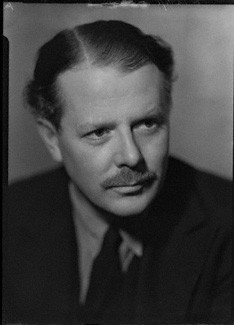
Harold Nicolson was born in Tehran, Persia (now Iran), on November 21, 1886, where his father was British charge d'affaires. His father eventually became the first Lord Carnock, and as a child Harold visited the estates of his uncle in Ireland, Lord Dufferin. Harold was an aristocrat through and through.
His early life was spent in diplomatic posts with his father - the Balkans, the Middle East, Morocco, Madrid, and St. Petersburg (Leningrad). He went into the diplomatic service himself, quite naturally, in 1909, after going to Balliol College, Oxford. On leave from his diplomatic post in Constantinople he married Vita Sackville-West in 1913 in the chapel at Knole, Kent. She was the daughter of Lord Sackville, and in his house at Knole there were 365 rooms: it had been a 16th-century present from Queen Elizabeth I to Thomas Sackville, Earl of Dorset.
In 1915 the young couple bought Long Barn, a medieval cottage near Knole, where they lived for 15 years. Vita was a poet, novelist, and gardener. Afterwards they lived in Sissinghurst Castle, also in Kent. Their friends were aristocrats, diplomats, and literary notables, among whom was Virginia Woolf, the famous stream-of-consciousness novelist. Vita was in love with Virginia, as she was in love with several other women in her life. Harold was a homosexual too, and they also loved each other. Vita and Harold had two sons, one of whom has written a book about their marriage: Nigel Nicolson, Portrait of a Marriage (1973), which depicts his parents as loving each other until the day they died.
As a diplomat, Nicolson was at the Paris Peace Conference at the end of World War I, and in the 1920s he served in the Middle East and Berlin. He resigned in 1929 to be near his wife and to write.
And he had time for his Diaries. They were published by his son Nigel, in three volumes, in 1966-1968. He was said to have never written a boring line. On reaching 50 he commented: "I am still very promising, and shall continue to be so until the day of my death" (which came 32 years later!).
In politics, he was a member of Parliament for the National Labour Party for West Leicester from 1935 to 1945. He was intensely opposed to Munich - the Munich Pact of 1938, signed by Prime Minister Neville Chamberlain and dictated by Hitler, for German subjugation of the Sudetenland of Czechoslovakia. He was committed, with Winston Churchill, in opposition to all dictators.
But he was not much of a "Labour man." After the war he failed in the election of 1945 as a National Labour Party candidate; he tried again in 1948 in a by-election at North Croydon, this time as a Labour Party contestant. He was unsuccessful. In his own words, he was a "cerebral socialist." He could not sympathize with the point of view of his mainly working-class constituents; they were too far from his own class, socially and intellectually. He was so civilized and so cultured that he seemed the last "gentleman" in politics.
He observed in 1948: "How difficult the proletariat are! … They destroy the grass, and there were little ragomuffins sailing cigarette cartons on the two pools. Yes, I fear my socialism is purely cerebral; I do not like the masses in the flesh."
Nicolson's suspicion of the working-classes was paralleled by his snobbishness about Jews, Arabs, Blacks, and Americans. He shared these prejudices with his wife. He knew these feelings were not worthy of him, but he could not seem to do anything about them. For instance, in the first three months of 1933 he and his wife were on a lecture-tour of the United States. Vita said: "with all their kindnesses, these people have very little imagination."
Of all the works Nicolson wrote, the history and diplomacy books stand out, and the Diaries. He died at Sissinghurst Castle on May 1, 1968, six years after his wife, never having recovered from her death.
(Source: http://www.answers.com/topic/harold-n...
More:
http://www.spartacus.schoolnet.co.uk/...
http://en.wikipedia.org/wiki/Harold_N...
http://www.harding.edu/jewell/TripleB...
http://findingaids.princeton.edu/coll...
http://www.thisisannouncements.co.uk/...
 by Derek Drinkwater (no photo)
by Derek Drinkwater (no photo)





 by
by
 Harold Nicolson
Harold Nicolson by Norman Rose (no photo)
by Norman Rose (no photo)
 Ferdinand Foch
Ferdinand Foch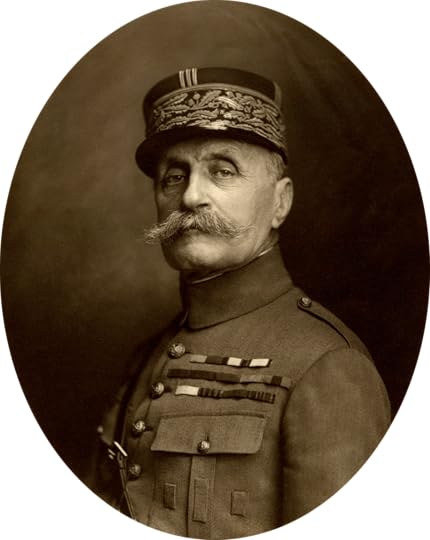
Ferdinand Foch (1851-1929) was born on 2 October 1851 in Tarbes, the son of a civil servant. He resolved to become a soldier early in life, joining the army in 1871 where he served in the Franco-Prussian war of 1870-71.
Sponsored Links
Having enrolled at the French army college, Ecole de Guerre, Foch proved so impressive that he was asked to remain as a teacher. His lectures there were published as The Principles of War and De la Conduite de la Guerre. Foch further served at the Ecole de Guerre from 1907-1911 as director.
With the onset of war Foch was given command of the Ninth Army during the Battle of the Marne following crucial early successes in Nancy; at the Marne he led the French counter-attack. He was subsequently promoted and given command of the Northern Army on the Western Front in October 1914. In this position he saw service during the Somme offensive in 1916 (and for which he was sacrificed as a French scapegoat, banished for a while to the Italian front).
With the arrival of the hero of Verdun, General Philippe Petain, replacing Robert Nivelle, Foch was recalled from relative obscurity and made Chief of the General Staff in 1918.
Following intense persuasion and negotiation from Georges Clemenceau, the French prime minister, Foch was given overall control of the Allied forces in March 1918, serving as Allied Supreme Commander, in which role he frequently conflicted with Pershing over the disposition of U.S. forces.
Foch stopped the advance of the German forces during the great push of Spring 1918 at the Second Battle of Marne in July 1918, mounting the counter-attack that turned the tide of the war. Foch accepted the German surrender in November 1918. Earlier this year, in July, Foch was made Marshal of France.
Following the conclusion of the war Foch played a major advisory role at the Paris Peace Conference.
Ferdinand Foch died in Paris on 20 March 1929.
(Source: http://www.firstworldwar.com/bio/foch...)
More:
https://en.wikipedia.org/wiki/Ferdina...
http://militaryhistory.about.com/od/1...
http://www.spartacus.schoolnet.co.uk/...
http://www.history.com/topics/ferdina...
http://www.gutenberg.org/ebooks/17511
 by Elizabeth Greenhalgh (no photo)
by Elizabeth Greenhalgh (no photo) by Michael S. Neiberg (no photo)
by Michael S. Neiberg (no photo)
 by Ferdinand Foch (no photo)
by Ferdinand Foch (no photo) by A. Hilliard Atteridge (no photo)
by A. Hilliard Atteridge (no photo)(no image) Foch Versus Clemenceau: France And German Dismemberment, 1918 1919 by Jere Clemens King (no photo)
(no image) General Foch at the Marne by Charles Le Goffic (no photo)
 Abdication of the Kaiser
Abdication of the Kaiser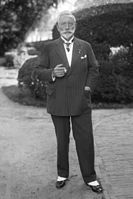
On November 10th 1918, Kaiser Wilhelm II boarded the imperial train for Holland. He signed the official act of abdication as King of Prussia and Emperor of Germany on November 28th with German troops still on foreign soil and the Weimar republic not yet a reality. His abdication was designed to put Germany in a better negotiating position with the victorious democracies. The final pressure for his abdication came from General von Hindenburg.
(Source: http://weimar.facinghistory.org/conte...)
More:
http://en.wikipedia.org/wiki/Wilhelm_...
http://www.firstworldwar.com/source/a...
http://www.bbc.co.uk/history/historic...
http://query.nytimes.com/mem/archive-...
http://news.google.com/newspapers?nid...
 by Giles MacDonogh (no photo)
by Giles MacDonogh (no photo) by Lamar Cecil (no photo)
by Lamar Cecil (no photo) by John van der Kiste (no photo)
by John van der Kiste (no photo) by Roger Chickering (no photo)
by Roger Chickering (no photo) by Christopher Munro Clark (no photo)
by Christopher Munro Clark (no photo)
 World War I Armistance
World War I Armistance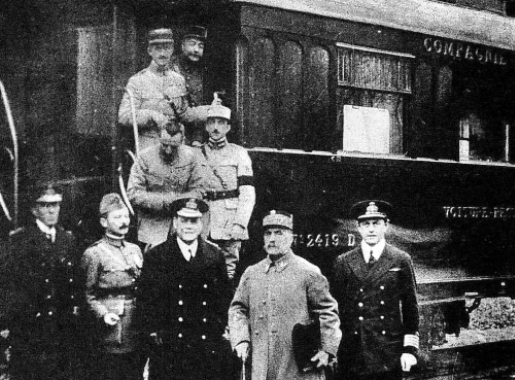
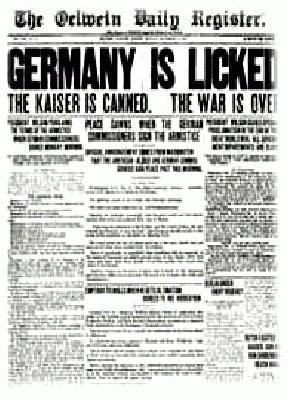
As early as August, 1918, senior German commanders suspected that their forces would collapse in the face of a sustained Allied offensive. To avoid a humiliating capitulation, they tried to stiffen their defense in the field while hoping to persuade the Allies that a negotiated armistice—that is, an armistice in which both sides made concessions—would be in their best interest. The disorderly retreat of the demoralized German soldiers and the success of the Allied offensives in August and September made an immediate negotiated armistice impossible.
On September 29, Ludendorff informed the government that military resistance had collapsed and that the only way to avoid the invasion and occupation of Germany was to sue for peace. A new parliamentary government was established and vested with much of the authority over domestic and foreign affairs that had been assumed by the military. Prince Max of Baden, a royalist liberal, was selected chancellor and foreign minister.
On October 5, Prince Max sent a note to President Wilson stating that Germany was prepared to begin armistice negotiations based on the Fourteen Points. Wilson did not inform his European allies of this note because he hoped to act as a mediator between them and Germany.
Wilson's view changed, however, after some 520 civilians were killed when a German U-boat sank the Leinster, a British mail ship. He was so infuriated that he informed the Germans that he was no longer willing to seek a negotiated armistice, and that he would allow the Allied military commanders to end the war on their terms. Wilson, believing that the kaiser could not be trusted to abide by the terms of an armistice, also informed Prince Max that the Allies would not conclude any type of armistice as long as the kaiser ruled Germany.
On October 20, Prince Max ordered an end to the submarine campaign, but it was too late to revive hopes for a negotiated armistice. Meanwhile, the European Allies were angered when they discovered that Wilson had not informed them of Prince Max's note.
Ludendorff resigned on October 27. A naval mutiny at Kiel spread to other north German cities early in November. Revolution broke out in Munich on November 7. Germany was on the brink of complete disaster. There was no alternative; the government asked for an armistice.
On November 8 a German armistice commission was received by Marshal Foch in his private railway coach, which served as his headquarters, at Compiègne. When the German military leaders were informed of the terms of the armistice, they argued that death in battle was preferable to humiliation at the peace table. However, on November 10, Kaiser William abdicated and fled to the Netherlands, and a new civilian government announced its acceptance of the Allied terms. The German representatives signed the agreement at 5:00 A.M., November 11, and hostilities ceased at 11:00 A.M.
Under the armistice, Germany surrendered 160 submarines, and its surface fleet was interned. Thousands of airplanes, heavy guns, and machine guns, and great quantities of other equipment, were surrendered to the Allies. The Germans agreed to vacate all occupied territory within 15 days. The treaties of Bucharest (Romania's surrender) and Brest-Litovsk (Russia's surrender) were renounced. All Germany west of the Rhine was occupied by the Allies, together with bridgeheads on the east bank at Mainz, Coblenz, and Cologne. Germany was to pay an indemnity, the amount of which was to be determined later.
The Armistice remained in effect until peace treaties were signed. The United States signed none of these treaties, but officially ended the war by a joint resolution of Congress on July 2, 1921. The United States then signed separate treaties with Austria (November 8, 1921). Germany (November 11), and Hungary (December 17).
(Source: http://history.howstuffworks.com/worl...)
More:
https://en.wikipedia.org/wiki/Armisti...
http://wwi.lib.byu.edu/index.php/Cond...
http://maps.omniatlas.com/europe/1918...
http://www.firstworldwar.com/features...
http://www.loc.gov/rr/news/topics/arm...
 by
by
 Joseph E. Persico
Joseph E. Persico by R.G. Grant (no photo)
by R.G. Grant (no photo) by Bullitt Lowry (no photo)
by Bullitt Lowry (no photo) by Erich von Ludendorff (no photo)
by Erich von Ludendorff (no photo) by G. D. Mitchell (no photo)
by G. D. Mitchell (no photo)
 King George V
King George V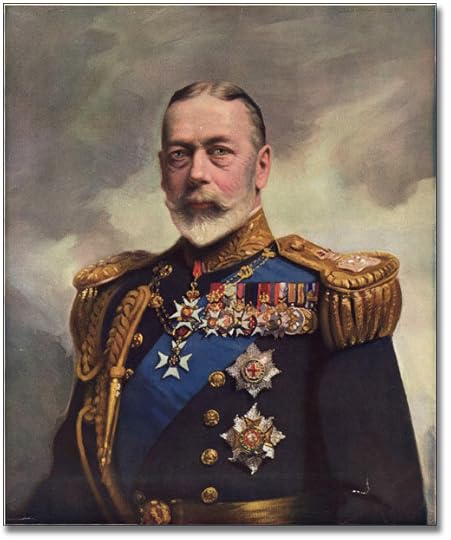
George V was the second son of Edward VII. His mother was Alexandra of Denmark, sister of Empress Marie of Russia. He joined the Royal Navy aged 12 and served until 1892 when he became heir to the throne on the death of his elder brother Albert, Duke of Clarence, who died of pneumonia.
In 1893, he married Princess Victoria Mary of Teck (known as ‘May’ to her family) who had previously been engaged to his brother. They became Duke and Duchess of York and lived on the Sandringham Estate, in Norfolk. The marriage was a success and George unlike his father never took a mistress. They had 6 children Edward, Albert, Mary, Henry, George and John. The youngest Prince John suffered from epilepsy and died aged 13.
He became King George V on the death of his father Edward VII in 1910, and Mary became Queen consort. They toured India in 1911 as Emperor and Empress of India. During World War I he made several visits to the front, and Mary visited wounded serviceman in hospital. She was staunch supporter of her husband during difficult times that included not only the war with Germany, but also the Russian revolution and murder of George’s cousin Princess Alix who was Tsarina Alexandra wife of Tsar Nicholas II, civil unrest including the General Strike in England, the rise of socialism, and Irish and Indian nationalism. George V has been criticised for not rescuing the Russian Royal family but at the time there was serious concern that it would incite a similar revolution in the UK. He sent a ship in 1922 to rescue the Greek Royal family including 1 year old Prince Philip now the Duke of Edinburgh.
In 1917 with anti-German sentiment running high, he changed the family name from Saxe-Coburg-Gotha (popularly known as Brunswick or Hanover) to Windsor, and he relinquished all German titles and family connections. George V enjoyed stamp collecting and although considered dull by biographers he became by his Silver Jubilee in 1935 a much loved King. In 1932 he started the tradition of the Royal Christmas broadcast which has continued ever since. His relationship deteriorated with this eldest son Edward (later Edward VIII) when he failed to settle down and had affairs with married women, but he was fond of his second son Albert (“Bertie” later George VI) and his granddaughter Elizabeth (later Elizabeth II) whom he called ‘Lilibet’. She called him ‘Grandpa England’. He died of pleurisy in January 1936.
(Source: http://www.britroyals.com/kings.asp?i...)
More:
https://en.wikipedia.org/wiki/George_V
http://www.britishpathe.com/video/cor...
http://www.spartacus.schoolnet.co.uk/...
http://www.firstworldwar.com/bio/geor...
http://www.royal.gov.uk/HistoryoftheM...
http://www.history.com/this-day-in-hi...
 by Kenneth Rose (no photo)
by Kenneth Rose (no photo) by Miranda Carter (no photo)
by Miranda Carter (no photo) by Catrine Clay (no photo)
by Catrine Clay (no photo) by Dennis Friedman (no photo)
by Dennis Friedman (no photo) by
by
 Harold Nicolson
Harold Nicolson
 Lord Robert Cecil
Lord Robert Cecil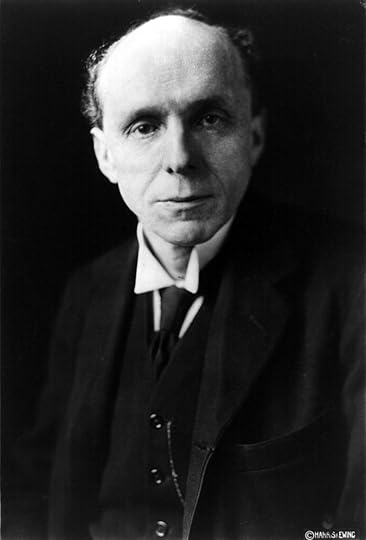
Edgar Algernon Robert Cecil (September 14, 1864-November 24, 1958) British lawyer, parliamentarian and cabinet minister, one of the architects of the League of Nations and its faithful defender, was the distinguished son of the third Marquess of Salisbury, that remarkable man who occupied, in the course of his career, the highest offices in the land: the foreign ministry under Disraeli, the prime ministry three times (1885, 1886-1892, and 1895-1902).
The education which Robert absorbed at home until he was thirteen was superior and far more interesting, he writes in his autobiography, than his four years at Eton. He enjoyed his undergraduate days at Oxford where he won renown as a debater, and after several terms of reading law, he was called to the Bar in 1887, at the age of twenty-three. Of his marriage to Lady Eleanor Lambton two years later he was fond of saying that it was the cleverest thing he had ever done1.
From 1887 to 1906, Cecil's career was a legal one, involving most of the forms of common law, occasional efforts in Chancery, and a steadily increasing parliamentary practice. He also collaborated in writing Principles of Commercial Law.
From the law, Cecil turned to politics. As a Conservative, he represented East Marylebone in the House of Commons from 1906 to 1910, lost two elections in the next year, and then won as an Independent Conservative in 1911 as member for the Hitchin Division of Hertfordshire, remaining in the Commons until 1923.
Fifty years old at the outbreak of World War I, Cecil went to work for the Red Cross, but with the formation of the coalition government in 1915, he became undersecretary for foreign affairs for a year, served as minister of blockade from 1916 to 1918, being responsible for devising procedures to bring economic and commercial pressure against the enemy, and early in 1918 became assistant secretary of state for foreign affairs.
The «third phase»2 of Cecil's public career - his absorption in the maintenance of peace - began in 1916. Appalled by the war's destruction of life, property, and human values, he became convinced that civilization could survive only if it could invent an international system that would insure peace. In September, 1916, he circulated a memorandum making proposals for the avoidance of war, which he says was the «first document from which sprang British official advocacy of the League of Nations»3.
From the inception of the League to its demise in 1946, a span of almost thirty years, Cecil's public life was almost totally devoted to the League. At the Paris Peace Conference, he was the British representative in charge of negotiations for a League of Nations; from 1920 through 1922, he represented the Dominion of South Africa in the League Assembly; in 1923 he made a five-week tour of the United States, explaining the League to American audiences; from 1923 to 1924, with the title of Lord Privy Seal, and from 1924 to 1927, with that of Chancellor of the Duchy of Lancaster, he was the minister responsible, under the jurisdiction of the Foreign Secretary, for British activities in League affairs.
In 1927, dissatisfied with the attitude of the British cabinet toward the League, he resigned from governmental office and thereafter, although an official delegate to the League as late as 1932, worked independently to mobilize public opinion in support of the League. He was president of the British League of Nations Union from 1923 to 1945, and joint founder and president, with a French Jurist, of the International Peace Campaign, known in France as Rassemblement universel pour la paix. Among his publications during this period were The Way of Peace (1928), a collection of lectures on the League; A Great Experiment (1941), a personalized account of his relationship to the League of Nations; All the Way (1949), a more complete autobiography.
Lord Robert's career brought him many honors. He was created first Viscount of Chelwood in 1923 and made a Companion of Honour in 1956, was elected chancellor of Birmingham University (1918-1944) and rector of the University of Aberdeen (1924-1927), was given the Peace Award of the Woodrow Wilson Foundation in 1924 and the Nobel Peace Prize in 1937, was presented with honorary degrees by the Universities of Edinburgh, Oxford, Cambridge, Manchester, Liverpool, St. Andrews, Aberdeen, Princeton, Columbia, and Athens.
In the spring of 1946 he participated in the final meetings of the League at Geneva, ending his speech with the sentence: «The League is dead; long live the United Nations!» He was eighty-one. He lived for thirteen more years, occasionally occupying his place in the House of Lords, and supporting international efforts for peace through his honorary life presidency of the United Nations Association.
(Source: http://www.nobelprize.org/nobel_prize...)
More:
http://en.wikipedia.org/wiki/Robert_C...
http://www.nobelprize.org/nobel_prize...
http://www.birmingham.ac.uk/alumni/ou...
http://onlinelibrary.wiley.com/doi/10...
http://en.wikiquote.org/wiki/Robert_C...
 by Various (no photo)
by Various (no photo) by Anique H.M. van Ginneken (no photo)
by Anique H.M. van Ginneken (no photo) by George W. Egerton (no photo)
by George W. Egerton (no photo)(no image) Nobel Lectures: Peace Vol 1 by F W Haberman (no photo)
(no image) A Great Experiment: An Autobiography by Lord Robert Cecil (no photo)
 Jan Smuts
Jan Smuts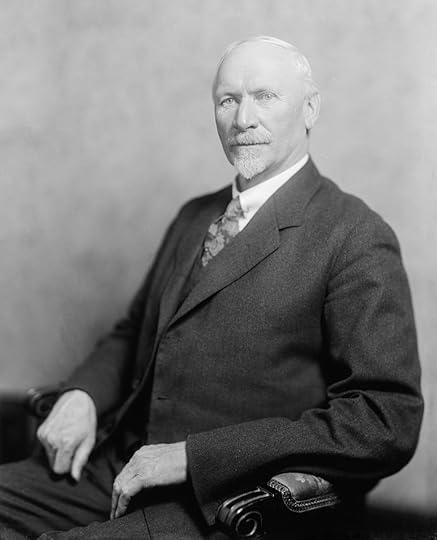
Jan Christian Smuts was born in Malmesbury, Cape Colony in 1870. Educated at Christ's College, Cambridge he returned to South Africa where he became the state attorney of Johannesburg and a member of Paul Kruger's government. In 1899 Smuts contributed to A Century of Wrong, a pamphlet that explained the Boer case against Britain.
During the Boer War (1899-1902) Smuts established himself as a guerrilla leader of exceptional talent. Smuts was also one of the leading negotiators involved in the production of the Vereeniging Peace Treaty (1902). An opponent of extreme nationalism, Smuts argued that South Africa's future lay in co-operation with Britain.
Smuts held a succession of cabinet posts, including defence minister, under President Louis Botha but on the outbreak of the First World War, Smuts rejoined the army and led South Africa's successful campaign in German East-Africa.
In 1917 David Lloyd George invited Smuts to join the Imperial War Cabinet in London. He soon obtained a high reputation and was an influential figure in devising Allied war strategy. While in England he played a leading role in establishing the Royal Air Force.
At the Paris Peace Conference, Smuts worked closely with Woodrow Wilson, in advocating a League of Nations. Smuts returned to South Africa after the signing of the Versailles Treaty in 1919 and soon afterwards became prime minister. Smuts lost power in 1924 but later returned to office as deputy prime minister (1933-39) and prime minister (1939-48).
Smuts worked closely with Winston Churchill during the Second World War and was the only man to sign the peace treaties at the end of both wars. Smuts was also a leading figure in the drafting of the United Nations Covenant. Jan Christian Smuts died in 1950.
(Source: http://www.spartacus.schoolnet.co.uk/...)
More:
https://en.wikipedia.org/wiki/Jan_Smuts
http://www.sahistory.org.za/people/ge...
http://www.nam.ac.uk/exhibitions/onli...
http://www.firstworldwar.com/bio/smut...
http://www.smutshouse.co.za/index.php...
 by Antony Lentin (no photo)
by Antony Lentin (no photo) by F. S. Crafford (no photo)
by F. S. Crafford (no photo) by Antony Lentin (no photo)
by Antony Lentin (no photo) by
by
 Sarah Gertrude Millin
Sarah Gertrude Millin by J. H. V. Crowe (no photo)
by J. H. V. Crowe (no photo) by Francis Brett Young (no photo)
by Francis Brett Young (no photo)(no image) Jan Smuts; South African Prime Minister by
 Arthur M. Schlesinger Jr.
Arthur M. Schlesinger Jr.(no image) Memoirs Of The Boer War by Jan Smuts (no image)
Jan Smuts by Ernst Christopher Danziger (no photo)
 Tasker Bliss
Tasker Bliss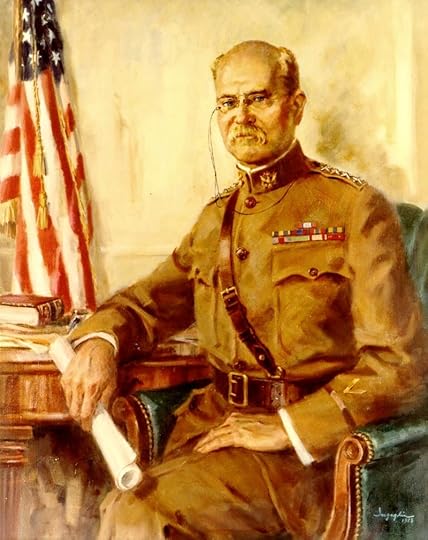
Tasker Howard Bliss (1853-1930) served as U.S. Army Chief of Staff during World War One and represented the U.S. on the Allied Supreme War Council at Versailles.
Graduating from West Point Bliss received a commission into the artillery prior to a return to West Point where he taught modern languages, subsequently graduating from the Artillery School.
For three years from 1885 Bliss taught at the Naval War College before becoming aide to Major General John Schofield, the army's commanding general.
Posted to Spain as an attaché Bliss was recalled to the U.S. in 1898 upon the outbreak of the U.S.-Spanish War, serving with the 1st Division in Puerto Rico.
For three years from 1899 Bliss served as Collector of Customs in Havana before receiving a promotion to Brigadier General and an appointment as inaugural President of the Army War College in 1903, a position he filled again following a spell of service in Asia in 1909.
In 1915 Bliss was made Major General and was Assistant Chief of Staff from February that year. From May 1917 he was appointed acting U.S. Army Chief of Staff, and in September that year he replaced General Scott as Chief of Staff. In this position Bliss played a key role in mobilising U.S. forces for war in Europe and was a trusted advisor of Secretary of War Newton Baker.
Accompanying President Woodrow Wilson's advisor Colonel House to London in 1917 Bliss was appointed U.S. representative to the newly formed Allied Supreme War Council in November 1917, a body intended to oversee Allied military strategy.
In May 1918 Bliss resigned as Chief of Staff having reached the mandatory retirement age, but remained in Europe where he was a key supporter of the appointment of Ferdinand Foch as Supreme Allied Commander, although he continued to support AEF commander John Pershing's insistence upon an independent U.S. army command.
With the armistice of November 1918 Bliss lobbied for lenient treatment of beaten Germany and Austria-Hungary, and argued for U.S. involvement in the League of Nations. He represented the U.S. at the Paris Peace Conference which produced the Treaty of Versailles.
He died in 1930.
(Source: http://www.firstworldwar.com/bio/blis...)
More:
http://en.wikipedia.org/wiki/Tasker_H...
http://www.arlingtoncemetery.net/thbl...
http://www.army.mil/article/26498/
http://findingaids.stanford.edu/xtf/v...
http://www.history.navy.mil/danfs/t2/...
 by Frederick Palmer (no photo)
by Frederick Palmer (no photo) by Jesse Russell (no photo)
by Jesse Russell (no photo) by Spencer C. Tucker (no photo)
by Spencer C. Tucker (no photo) by John J Pershing (no photo)
by John J Pershing (no photo) by Margaret MacMillan (no photo)
by Margaret MacMillan (no photo)
 Henry White
Henry White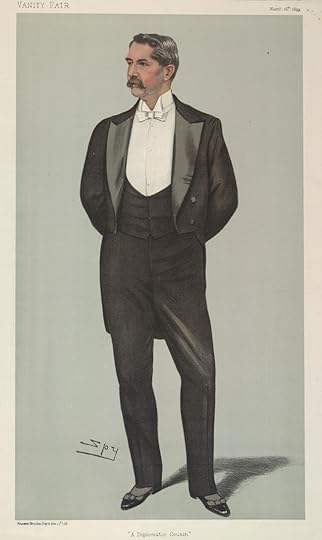
White, Henry, 1850–1927, American diplomat, b. Baltimore. He studied abroad and traveled widely. White—often called the first career diplomat in the United States—entered the foreign service as secretary (1883–84) of the U.S. legation in Vienna. He served (1884–93) with the U.S. embassy at London, and in 1896 President McKinley appointed him secretary of the embassy. He later was ambassador at Rome (1905–7) and at Paris (1907–9); as head of the U.S. delegation to the Algeciras Conference (1906), White helped in the settlement of the Moroccan Crisis between Germany and France. He was sent (1910) as a special emissary to Chile and in 1918 was appointed a commissioner to the Paris Peace Conference by President Wilson.
(Source: http://www.infoplease.com/encyclopedi...)
More:
https://en.wikipedia.org/wiki/Henry_W...
http://lcweb2.loc.gov/service/mss/ead...
http://www.findagrave.com/cgi-bin/fg....
http://www.jstor.org/stable/1897467
http://www.columbia.edu/cu/lweb/archi...
 by Margaret MacMillan (no photo)
by Margaret MacMillan (no photo) by Charles E. Neu (no photo)
by Charles E. Neu (no photo) by John Milton Cooper Jr. (no photo)
by John Milton Cooper Jr. (no photo) by Lloyd E. Ambrosius (no photo)
by Lloyd E. Ambrosius (no photo) by Bruce Elleman (no photo)
by Bruce Elleman (no photo)
 Raymond Poincare
Raymond Poincare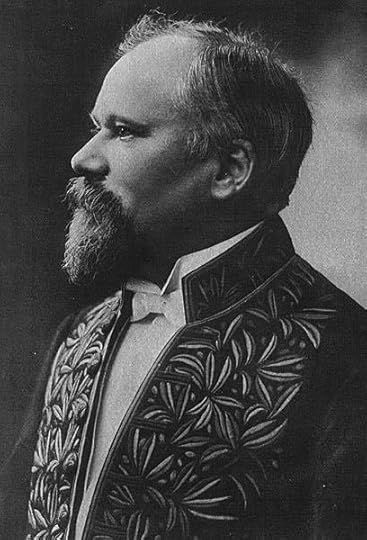
Raymond Poincare, the son of an engineer, was born in Bar-le-Duc, France, on 20th August, 1860. After graduating from the University of Paris he became a lawyer in 1882.
Poincare was elected to the Chamber of Deputies in 1887 and six years later became France's youngest ever minister when he was placed in charge of education (1893-94). He also served as minister of finance (1894-95) before once again becoming minister of education (1895).
In 1903 Poincare left the Chamber of Deputies to concentrate on his private law practice. He did serve in the Senate and in 1906 agreed to become minister of finance.
Poincare was appointed head a coalition government in January 1912. He also served as foreign minister and concerned about the growth of German militarism played an active role in strengthening the Triple Entente. This led him to be criticized by the left as a warmonger.
In January 1913, Poincare defeated Georges Clemenceau to become president of France. During the First World War Poincare tried hard to preserve national unity. However Poincare found it difficult working with Clemenceau who became prime minister in 1917.
Poincare returned to the Senate after his presidential term came to an end in February 1920. A supporter of the war guilt clause in the Versailles Peace Treaty he served as chairman of the reparations commission.
Poincare returned to power as prime minister in January 1922. He refused to accept a delay in reparation payments and in January 1923 ordered the French Army into the Ruhr.
Defeated by the left in the elections held in 1924 Poincare was replaced by Edouard Herriot as prime minister. However, he once again was brought back to power in July, 1926 and served as both prime minister and minister of finance. France enjoyed economic prosperity during this term of office and he was a popular leader until ill-health forced him to resign in July 1929. Raymond Poincare died in Paris on 15th October, 1934.
(Source: http://www.spartacus.schoolnet.co.uk/...)
More:
http://en.wikipedia.org/wiki/Raymond_...
http://www.firstworldwar.com/bio/poin...
http://www.history.com/topics/raymond...
http://www.france.fr/en/outstanding-m...
http://archive.org/details/addressdel...
http://www.youtube.com/watch?v=xu-FTI...
 by Jean-Marie Maueur (no photo)
by Jean-Marie Maueur (no photo) by Philippe Bernard (no photo)
by Philippe Bernard (no photo) by J. F. V. Keiger (no photo)
by J. F. V. Keiger (no photo)(no image) The Memoirs Of Raymond Poincaré by Raymond Poincare (no photo)
(no image) Address delivered by Mr. Raymond Poincar by Raymond Poincare (no photo)
(no image) How France Is Governed by Raymond Poincare (no photo)
(no image) Raymond Poincaré and the French Presidency by Gordon Wright (no photo)
 William Christian Bullitt, Jr.
William Christian Bullitt, Jr.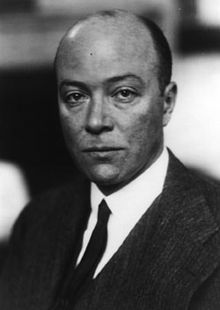
Bullitt, William Christian, 1891-1967, American diplomat, b. Philadelphia. A member of the American delegation to the Paris Peace Conference following World War I, he was sent by President Wilson on a secret mission to Russia. When his report favoring recognition of the Communist government was rejected, he resigned and later bitterly attacked the Versailles Treaty before the Senate. After 12 years of private life, he was made special assistant to Cordell Hull and served (1933-36) as first U.S. ambassador to the USSR. Later he was ambassador to France (1936-40), ambassador at large in the Middle East (1941-42), and special assistant to the Secretary of the Navy (1942-43). He served (1944-45) as a major in the Free French army under Charles de Gaulle.
(Source: http://www.answers.com/topic/bullitt-...)
More:
http://en.wikipedia.org/wiki/William_....
http://www.unc.edu/depts/diplomat/arc...
http://moscow.usembassy.gov/william_b...
http://www.spartacus.schoolnet.co.uk/...
http://www.gutenberg.org/ebooks/10713
http://docs.fdrlibrary.marist.edu/psf...
 by Michael Cassella-Blackburn (no photo)
by Michael Cassella-Blackburn (no photo)

 by William C. Bullitt (no photo)
by William C. Bullitt (no photo) by Dennis J. Dunn (no photo)
by Dennis J. Dunn (no photo) by Will Brownell (no photo)
by Will Brownell (no photo)(no image) William C. Bullitt and the Soviet Union by Unknown Author 19 (no photo)
 Pope Benedict XV
Pope Benedict XV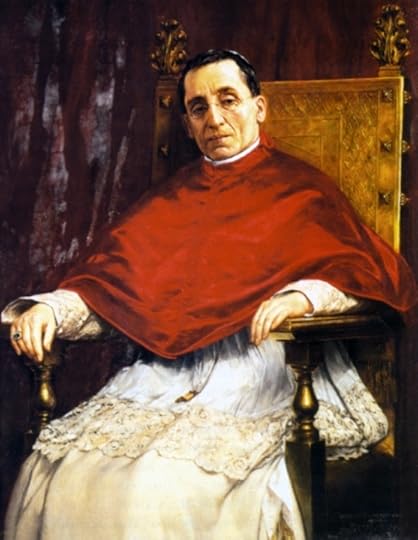
The Italian prelate Giacomo della Chiesa (1854-1922) reigned as Pope Benedict XV from 1914 to 1922. His pontificate was spent in dealing with the effects of World War I.
Giacomo della Chiesa was born at Pegli on Nov. 21, 1854. He studied at the University of Bologna and the Collegio Capranica in Rome and then became a papal diplomat. After 4 years in Spain he was recalled in 1887 to the Vatican Secretariat of State. In 1907 he was made archbishop of Bologna, in May 1914 he became a cardinal, and on September 3 of that year he was elected pope.
Benedict played no effective role in the war crisis. His predecessor, Pius X, had retired to a position of international isolation. Benedict, while condoning Austria's attack on Serbia as legitimate, tried to remain neutral. However, his belief that the fall of Czarist Russia would provide an opportunity for the expansion of Roman Catholicism weakened his neutral stance. On the other hand, he refused to accede to the Western powers' urging that he condemn German belligerence. Benedict's policy was also influenced by his desire to prevent Catholic nations from fighting each other. His attitude vexed the Allies, who saw it as a further frustration of their war effort against Germany.
Benedict did make an elaborate effort to mediate between the warring powers in August 1917. But the entry of the United States into the war on the side of the Allies and the consequent hardening of the Allies' attitude nullified his attempt. The Pope organized extensive relief services for prisoners of war and for the victims of the war's devastation, but in 1919 he was excluded from the peace talks.
In the aftermath Benedict adapted Vatican administrative machinery to the territorial and national changes wrought by the war and the peace treaty. He did eventually succeed in reestablishing diplomatic relations with France and Great Britain, but his hope of reaching concordats with the new states set up by the Treaty of Versailles was not fulfilled until the reign of his successor, Pius XI.
Benedict's influence was greater within Italy. He firmly circumvented the Integralist movement, and he fomented the Unione Popolare, thus laying foundations for the Catholic Action movement of the 1930s. Within the Church his emphasis of an indigenous priesthood enabled Pius XI to implement this idea. Benedict condemned the association of any missionary activity with imperialism. In the hope that the collapse of Czarist Russia and the emergence of new sovereign states in eastern Europe would lead the schismatic churches to rejoin the Roman communion, he founded the Pontifical Institute for Oriental Studies in 1917. He died on Jan. 22, 1922. Although the main aims of his pontificate were unfulfilled, it may be said that Benedict laid the foundation for many of the policies carried out by his successors.
(Source: http://biography.yourdictionary.com/p...)
More:
http://en.wikipedia.org/wiki/Pope_Ben...
http://www.firstworldwar.com/bio/pope...
http://www.history.com/this-day-in-hi...
http://net.lib.byu.edu/estu/wwi/bio/b...
http://www.catholic-hierarchy.org/bis...
 by Walter H. Peters (no photo)
by Walter H. Peters (no photo) by John F. Pollard (no photo)
by John F. Pollard (no photo) by John Cornwell (no photo)
by John Cornwell (no photo) by Matthew Bunson (no photo)
by Matthew Bunson (no photo)(no image) Spiritus Paraclitus by Pope Benedict XV (no photo)
 Emir Faisal
Emir Faisal

Faisal (1885-1933), third son of Emir Hussein, the son of Sharif Husain of Mecca, was born in 1885. Faisal lived in Constantinople and later sat in the Ottoman parliament as deputy for Jidda.
During the First World War Faisal served with the Turkish Army. In 1916 he changed sides and began working closely with T. E. Lawrence. He became the leading Arab military commander and led the troops into Damascus on 3rd October 1918.
Prince Faisal attended Paris Peace Conference with Lawrence of Arabia. He had meetings with Felix Frankfurter. His assistant, Ella Winter, recalled in her autobiography, And Not to Yield (1963): "The young, beautiful Prince Feisal was always followed by his group of tall, imposing, silent Arabs in long white robes and head dress, and by his shadow, Colonel T. E. Lawrence, also in native dress. Lawrence was short and fragile-looking, with a delicate, poetic face, but he appeared as much at home with the desert Bedouins and the prince he seemed so attached to as with European diplomats. Felix was as much intrigued by Lawrence's role in all the Middle Eastern politics as with his romantic appearance."
On 10th March 1920 declared himself the King of Syria and Palestine. When he was deposed four months later by the French the British authorities agreed that he could become King of Iraq. He took office on 23rd August 1921. The Kurds in the north of the country were unhappy with this arrangement and were involved in several uprisings against his rule.
The British mandate for Iraq came to an end in October, 1932 and Iraq now entered the League of Nations as an independent state. However, Britain bound Iraq closely to the British Empire by a 25 year military alliance. Britain retained military bases in Iraq and exerted a strong political influence in the country. This included ensuring that the concession for oil exploration and exploitation to the Iraq Petroleum Company, a conglomerate of British, French and United States interests.
(Source: http://www.spartacus.schoolnet.co.uk/...)
More:
https://en.wikipedia.org/wiki/Faisal_...
http://dcollections.oberlin.edu/cdm/c...
http://www.awm.gov.au/blog/2006/10/23...
http://www.jewishvirtuallibrary.org/j...
http://mfa.gov.il/mfa/ForeignPolicy/P...
 by Charles Tripp (no photo)
by Charles Tripp (no photo) by Michael Korda (no photo)
by Michael Korda (no photo) by Ali A. Allawi (no photo)
by Ali A. Allawi (no photo) by Jesse Russell (no photo)
by Jesse Russell (no photo) by Source Wikipedia (no photo)
by Source Wikipedia (no photo)
 T.E. Lawrence
T.E. Lawrence
Thomas Edward Lawrence was born on 16 August 1888 in north Wales. His father, Thomas Chapman, had left his wife to live with Lawrence's mother, a governess. Lawrence studied at Oxford University and in 1909 visited Syria and Palestine. A year later he joined an archaeological dig in Syria, where he stayed from 1911 to 1914, learning Arabic. He developed a deep sympathy for the Arabs who had lived under Turkish rule for centuries. In 1914, Lawrence was part of an expedition exploring northern Sinai, carrying out reconnaissance under cover of a scientific expedition.
When war broke out, Lawrence became an intelligence officer in Cairo. In June 1916, the Arab Revolt began against Turkey, an ally of Germany, a revolt the British had worked hard to encourage. Lawrence became liaison officer and adviser to Feisal (also Faisal), son of the revolt's leader Sherif Hussein of Mecca. Lawrence was a superb tactician and a highly influential theoretician of guerrilla warfare. His small but effective irregular forces attacked Turkish communications and supply routes, tying down thousands of Turkish troops and preventing them from fighting against regular allied forces under the command of General Edward Allenby. Lawrence's overriding aim was to help the Arabs achieve military success that would lead to post-war self-government.
In June 1917, the Arab forces won their first major victory, seizing Aqaba, a strategically important Red Sea port. Success continued as they gradually made their way north. After the fall of Damascus in October 1918, Lawrence left for London and then the Paris Peace Conferences to lobby for Arab independence. Before the conference had even begun, the British and French had agreed on the future of Turkey's Arab territories. Lawrence was disillusioned by his failure to bring the Arabs self-rule, but was by now a celebrity, helped by the publicity efforts of American journalist Lowell Thomas.
In 1921, Colonial Secretary Winston Churchill appointed Lawrence as an adviser, but in 1922 he resigned and joined the Royal Air Force in an attempt to find anonymity. During the 1920s and early 1930s, he served both in the RAF and the Tank Corps under assumed names, but press intrusion continued to dog him. A private edition of his book 'The Seven Pillars of Wisdom' was printed in 1926. A full public edition was not released until after his death.
Lawrence left the RAF in February 1935 and died on 19 May following a motorcycle accident.
(Source: http://www.bbc.co.uk/history/historic...)
More:
http://en.wikipedia.org/wiki/T._E._La...
http://www.pbs.org/lawrenceofarabia/p...
http://www.telstudies.org/biography/i...
http://www.firstworldwar.com/bio/lawr...
http://www.youtube.com/watch?v=78y7jY...
http://militaryhistory.about.com/od/1...
 by Michael Korda (no photo)
by Michael Korda (no photo) by
by
 Alistair MacLean
Alistair MacLean by
by
 B.H. Liddell Hart
B.H. Liddell Hart by Lowell Thomas (no photo)
by Lowell Thomas (no photo) by Jeremy Wilson (no photo)
by Jeremy Wilson (no photo) by
by
 T.E. Lawrence
T.E. Lawrence
 Frank Brandegee
Frank Brandegee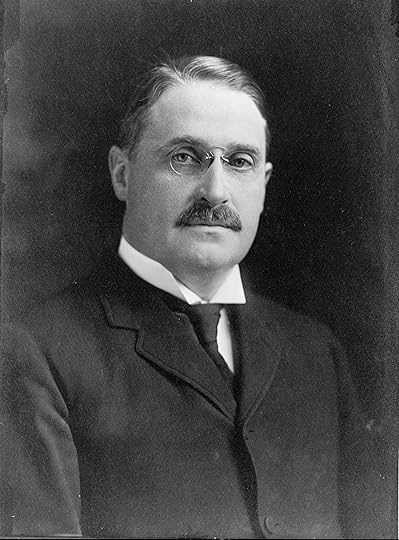
BRANDEGEE, Frank Bosworth, a Representative and a Senator from Connecticut; born in New London, Conn., July 8, 1864; attended the common schools, and graduated from Yale College in 1885; studied law; admitted to the bar in 1888 and practiced in New London; member, State house of representatives 1888; corporation counsel of New London 1889-1893, 1894-1897, when he resigned; member, State house of representatives 1899, and served as speaker; again elected corporation counsel of New London 1901-1902, when he resigned to become a Member of Congress; chairman of the Republican State convention in 1904; elected as a Republican to the Fifty-seventh Congress to fill the vacancy caused by the death of Charles A. Russell; reelected to the Fifty-eighth and Fifty-ninth Congresses and served from November 4, 1902, until May 10, 1905, when he resigned, having been elected a United States Senator to fill the vacancy caused by the death of Orville H. Platt; reelected in 1908, 1914, and 1920, and served from May 10, 1905, until his death by suicide in Washington, D.C., October 14, 1924; served as President pro tempore during the Sixty-second Congress; chairman, Committee on Forest Reservations and Game Protection (Fifty-ninth through Sixty-first Congresses), Committee on Interoceanic Canals (Sixty-second Congress), Committee on Panama (Sixty-second Congress), Committee on Pacific Railroads (Sixty-third through Sixty-fifth Congresses), Committee on Library (Sixty-sixth and Sixty-seventh Congresses), Committee on Judiciary (Sixty-eighth Congress); interment in Cedar Grove Cemetery, New London, Conn.
(Source: http://bioguide.congress.gov/scripts/...)
More:
http://en.wikipedia.org/wiki/Frank_B....
http://mssa.library.yale.edu/obituary...
http://news.google.com/newspapers?nid...
(no image) Treaty of peace with Germany. Hearings before the Committee on Foreign Relations, United States Senate, Sixty-sixth Congress, first session, on the treaty of peace with Germany, signed at Versailles on June 28, 1919 and submitted to the Senate on July 10, by United States Senate Committee on Foreign Relations (no photo)
 Influenza Pandemic (1918-1919)
Influenza Pandemic (1918-1919)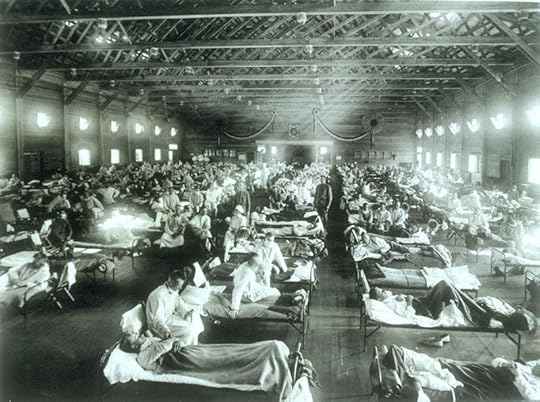
The influenza or flu pandemic of 1918 to 1919, the deadliest in modern history, infected an estimated 500 million people worldwide--about one-third of the planet’s population at the time--and killed an estimated 20 million to 50 million victims. More than 25 percent of the U.S. population became sick, and some 675,000 Americans died during the pandemic. The 1918 flu was first observed in Europe, the U.S. and parts of Asia before swiftly spreading around the world. Surprisingly, many flu victims were young, otherwise healthy adults. At the time, there were no effective drugs or vaccines to treat this killer flu strain or prevent its spread. In the U.S., citizens were ordered to wear masks, and schools, theaters and other public places were shuttered. Researchers later discovered what made the 1918 pandemic so deadly: In many victims, the influenza virus had invaded their lungs and caused pneumonia.
(Source: http://www.history.com/topics/1918-fl...)
More:
http://www.archives.gov/exhibits/infl...
http://en.wikipedia.org/wiki/1918_flu...
http://www.stanford.edu/group/virus/uda/
http://www.flu.gov/pandemic/history/1...
http://www.influenzaarchive.org/
http://www.history.navy.mil/library/o...
 by
by
 John M. Barry
John M. Barry by Nancy K. Bristow (no photo)
by Nancy K. Bristow (no photo) by
by
 Alfred W. Crosby
Alfred W. Crosby by Richard Collier (no photo)
by Richard Collier (no photo) by
by
 Gina Kolata
Gina Kolata
 Shandong Question
Shandong Question[image error]
During the First World War, China supported the Allies on condition that Germany's concessions on the Shandong peninsula would be returned to China. In spite of this agreement, the Article transferred the concessions in Shandong to Japan rather than returning sovereign authority to China. Japan was allowed possession of the province because of secret agreements signed with European powers.[1] One of the rationales the Japanese used was that Duan Qirui had borrowed money from Japan to strengthen his army, this now being repaid with the concession of the Shandong peninsula.
The Chinese ambassador to Paris, Wellington Koo, stated that the Chinese could not concede Shandong, which was the birthplace of Confucius, a highly important Chinese philosopher, as much as Christians could not concede Jerusalem, and demanded the promised return of sovereignty over Shandong, to no avail. Chinese outrage over this provision led to demonstrations and a cultural movement known as the May Fourth Movement and influenced Wellington Koo not to sign the treaty.
China declared the end of its war against Germany in September 1919 and signed a separate treaty with Germany in 1921. The dispute was mediated by the United States in 1922 during the Washington Naval Conference, and the sovereignty of Shandong was agreed to be returned to China on February 4 of that year, while Japanese residents in Shandong were given special rights.
(Source: http://en.wikipedia.org/wiki/Shandong...)
More:
http://www.jstor.org/stable/3634655
http://www.jstor.org/stable/1888274
http://www.jstor.org/stable/29738358
http://en.wikipedia.org/wiki/Shandong
http://www.jstor.org/stable/29738196
 by Ge-Zay Wood (no photo)
by Ge-Zay Wood (no photo) by Bruce Elleman (no photo)
by Bruce Elleman (no photo) by Colin MacKerras (no photo)
by Colin MacKerras (no photo) by John Keay (no photo)
by John Keay (no photo) by Shizhang Hu (no photo)
by Shizhang Hu (no photo)
 Ulrich von Brockdorff-Rantzau
Ulrich von Brockdorff-Rantzau
Ulrich, count von Brockdorff-Rantzau, (born May 29, 1869, Schleswig-Holstein, Prussia [Germany]—died September 8, 1928, Berlin, Germany), German foreign minister at the time of the Treaty of Versailles, and one of the architects of German-Soviet understanding in the 1920s.
As German minister in Copenhagen (1912–18), Brockdorff-Rantzau supported the Danish policy of neutrality during World War I and was able to maintain German-Danish trade. At the Conference of Paris in 1919 he argued in vain for better conditions of peace for Germany. Unable to dissuade his government from ratifying the Treaty of Versailles, he resigned his post as foreign minister in June 1919. In 1922 he became ambassador to the Soviet Union, where he and Soviet statesman Georgy V. Chicherin worked to consolidate the German-Soviet rapprochement inaugurated by the Treaty of Rapallo. The German-Soviet Treaty of Berlin (April 1926) counterbalanced the Locarno Pact of 1925, which had seemed to link Germany too closely with the Western powers.
(Source: http://www.britannica.com/EBchecked/t...)
More:
http://en.wikipedia.org/wiki/Ulrich_v...
http://www.firstworldwar.com/source/p...
http://www.ctevans.net/Versailles/Arc...
http://www.history.com/this-day-in-hi...
http://www.nationalarchives.gov.uk/ed...
 by Margaret MacMillan (no photo)
by Margaret MacMillan (no photo) by Manfred F. Boemeke (no image)
by Manfred F. Boemeke (no image) by Anton Kaes (no photo)
by Anton Kaes (no photo)(no image) Heinrich von Rantzau's Buch über die Erhaltung der Gesundheit by Henrik Rantzau (no photo)
(no image) Ulrich Graf Brockdorff-Rantzau (1869-1928): Eine Politische Biographie by Christiane Scheidemann (no photo)
 Russian Whites Movement
Russian Whites Movement
The White Movement was a loose confederation of Anti-Communist forces who fought the Bolsheviks in the Russian Civil War (1917–1922/3) and, to a lesser extent, continued operating as militarized associations both outside and within Russian borders until roughly the Second World War. Remnants and continuations of the movement, some of which only had narrow support, endured within the wider White émigré community until after the fall of communism.
(Source: https://en.wikipedia.org/wiki/White_m...)
More:
http://en.wikipedia.org/wiki/Russian_...
http://www.historycentral.com/Europe/...
http://www.historylearningsite.co.uk/...
http://www.spartacus.schoolnet.co.uk/...
http://www.bbc.co.uk/history/worldwar...
 by W. Bruce Lincoln (no photo)
by W. Bruce Lincoln (no photo) by Oleg Budnitskii (no photo)
by Oleg Budnitskii (no photo) by
by
 Evan Mawdsley
Evan Mawdsley by Mikhail Khvostov (no photo)
by Mikhail Khvostov (no photo) by David S. Foglesong (no photo)
by David S. Foglesong (no photo) by A.B. Murphy (no photo)
by A.B. Murphy (no photo)
 Treaty of Versailles
Treaty of Versailles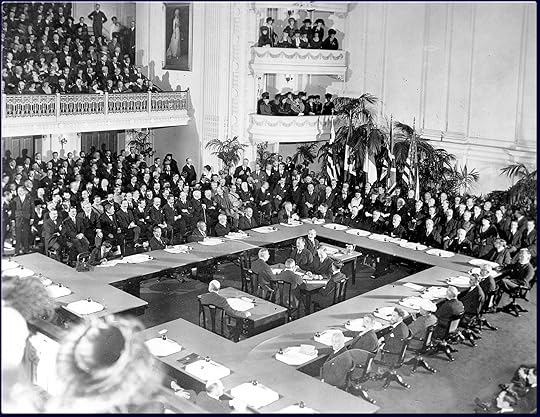

Begun in early 1919 and completed in April after several months of hard bargaining, it was presented to Germany for consideration on 7 May 1919.
The German government was given three weeks to accept the terms of the treaty (which it had not seen prior to delivery). Its initial response was a lengthy list of complaints, most of which were simply ignored. The treaty was perceived by many as too great a departure from U.S. President Wilson's Fourteen Points; and by the British as too harsh in its treatment of Germany.
Controversial even today, it is often argued that the punitive terms of the treaty supported the rise of the Nazis and the Third Reich in 1930s Germany, which in turn led to the outbreak of World War II.
The Versailles treaty deprived Germany of around 13.5% of its 1914 territory (some seven million people) and all of its overseas possessions. Alsace-Lorraine was returned to France, and Belgium was enlarged in the east with the addition of the formerly German border areas of Eupen and Malmedy.
Among other territorial re-arrangements, an area of East Prussia was handed over to Lithuania, and the Sudetenland to Czechoslovakia.
The German army was limited to a maximum of 100,000 men, and a ban placed upon the use of heavy artillery, gas, tanks and aircraft. The German navy was similarly restricted to shipping under 10,000 tons, with a ban on submarines.
The contents of the treaty have been divided into fifteen sections, each of which deals with a particular aspect of the treaty.
(Source: http://www.firstworldwar.com/source/v...)
More:
http://en.wikipedia.org/wiki/Treaty_o...
http://avalon.law.yale.edu/subject_me...
http://www.spartacus.schoolnet.co.uk/...
http://en.chateauversailles.fr/histor...
http://www.history.co.uk/explore-hist...
 by Margaret MacMillan (no photo)
by Margaret MacMillan (no photo) by Manfred F. Boemeke (no photo)
by Manfred F. Boemeke (no photo)(no image) Portrait of a Decision by Howard Elcock (no photo)
 by David Andelman (no photo)
by David Andelman (no photo) by
by
 John Maynard Keynes
John Maynard Keynes by Alan Sharp (no photo)
by Alan Sharp (no photo)
This is going to be a great Encyclopedia of World War I Glossary thread when it is done. Not just for the Wilson book which it is fabulous for but for any book being read from that time period.
 Bentley wrote: "This is going to be a great Encyclopedia of World War I Glossary thread when it is done. Not just for the Wilson book which it is fabulous for but for any book being read from that time period."
Bentley wrote: "This is going to be a great Encyclopedia of World War I Glossary thread when it is done. Not just for the Wilson book which it is fabulous for but for any book being read from that time period."Yes, indeed.
 Philander C. Knox
Philander C. Knox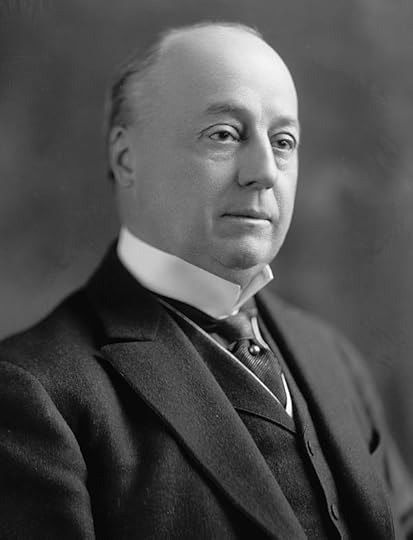
Knox was born in Fayette County, Pennsylvania in 1853. The son of a respected banker, he entered Mount Union College in Ohio and received his Bachelor of Arts degree in 1872. Knox read law for three years in Pittsburgh before gaining admission to the Pennsylvania bar in 1875. The following year he served as Assistant United States District Attorney for the western district of Pennsylvania.
Knox opened a lucrative private practice as a corporate attorney and in 1897 he served as President of the Pennsylvania Bar Association. As counsel for the Carnegie Steel Company, he took a prominent part in organizing the United States Steel Corporation in 1901.
That same year, President William McKinley offered the position of Attorney General to Knox—an old friend from college. Knox served in the cabinets of President McKinley and his successor, President Theodore Roosevelt.
In 1904, Knox was appointed U.S. Senator from Pennsylvania to fill a vacancy. Following his unsuccessful bid for the Republican presidential nomination in 1908, his former opponent, President Taft, appointed Knox Secretary of State.
Influence on American Diplomacy
As Secretary of State, Knox tightly controlled U.S. foreign policy. He reorganized the Department of State into regional divisions, maximizing expertise acquired by those in the Foreign Service. Knox extended the merit system of selection and promotion from the Consular Service to the Diplomatic Service.
Knox continued the Open Door Policy of his predecessors and pursued an even more aggressive role in encouraging and protecting American investments abroad.
His emphasis on trade to promote democracy and stability became known as "Dollar Diplomacy." The United States first initiated this policy in Asia, but it became the core of U.S. foreign policy in Latin America. Interventions in the Caribbean and Central America were based on the theory that democratic governments would lead to free markets and open trade.
Knox also successfully negotiated the Bering Sea controversy during his time as Secretary. The treaty, designed to put an end to the devastating slaughter of seals, was signed by the United States, Great Britain, Japan, and Russia in 1911.
After President Taft lost his second presidential bid in 1912, Knox resigned his position and returned to Pittsburgh. He continued to practice law until he returned to the U.S. Senate in 1916, where he led the fight against the Treaty of Versailles and the League of Nations after World War One.
Knox served in the Senate until his death in 1921.
(Source: http://history.state.gov/departmenthi...)
More:
http://en.wikipedia.org/wiki/Philande...
http://millercenter.org/president/taf...
http://bioguide.congress.gov/scripts/...
http://explorepahistory.com/hmarker.p...
http://www.fayettetrust.org/Philander...
 by Lewis L. Gould (no photo)
by Lewis L. Gould (no photo) by Henry F. Pringle (no photo)
by Henry F. Pringle (no photo) Philander C. Knox (no photo)
Philander C. Knox (no photo)(no image) Senators of the United States: A Historical Bibliography, a Compilation of Works by and About Members of the United States Senate, 1789-1995 by Jo Anne McCormick Quatannens (no photo)
(no image) Address of Hon. Philander Chase Knox at a mass meeting held under the auspices of the Union League at the Academy of Music, Philadelphia, October 20, 1908 by Philander Knox (no photo)
 Red Scare (1918-1921)
Red Scare (1918-1921)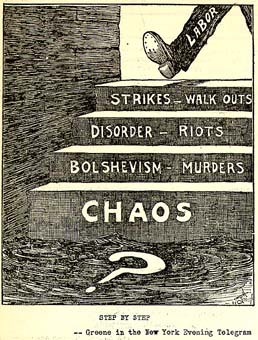
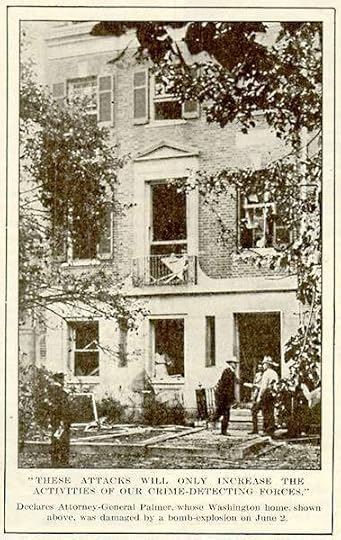
Shortly after the end of World War I and the Bolshevik Revolution in Russia, the Red Scare took hold in the United States. A nationwide fear of communists, socialists, anarchists, and other dissidents suddenly grabbed the American psyche in 1919 following a series of anarchist bombings. The nation was gripped in fear. Innocent people were jailed for expressing their views, civil liberties were ignored, and many Americans feared that a Bolshevik-style revolution was at hand. Then, in the early 1920s, the fear seemed to dissipate just as quickly as it had begun, and the Red Scare was over.
During World War I, a fervent patriotism was prevalent in the country, spurred by propagandist George Creel, chairman of the United States Committee on Public Information. While American boys were fighting the "Huns" abroad, many Americans fought them at home. Anyone who wasn't as patriotic as possible--conscientious objectors, draft dodgers, "slackers," German-Americans, immigrants, Communists--was suspect. It was out of this patriotism that the Red Scare took hold.
At the time the World War I Armistice was executed in 1918, approximately nine million people worked in war industries, while another four million were serving in the armed forces. Once the war was over, these people were left without jobs, and war industries were left without contracts. Economic difficulties and worker unrest increased.
Two main Union/Socialist groups stood out at the time--the International Workers of the World (the I.W.W. or Wobblies) centered in the northwest portion of the country and led by "Big" Bill Haywood, and the Socialist party led by Eugene Debs. Both groups were well know objectors to WWI, and to the minds of many Americans therefore, unpatriotic. This led them open to attack. Any activity even loosely associated with them was suspicious.
One of the first major strikes after the end of the war was the Seattle shipyard strike of 1919 which, erroneously, was attributed to the Wobblies. On January 21, 35,000 shipyard workers in Seattle struck. A general strike resulted when 60,000 workers in the Seattle area struck on February 6. Despite the absence of any violence or arrests, the strikers were immediately labeled as Reds who and charges that they were trying to incite revolution were leveled against them. Hysteria struck the city as department stores, grocery stores, and pharmacies were flooded by frightened customers trying to ensure that they would be able to survive a prolonged strike. The Seattle strike suddenly became national news, with newspaper headlines across the country telling of Seattle's impending doom and potential loss to the Reds and urging for the strike to be put down. Seattle mayor Ole Hansen, who had long hated the Wobblies and took the strike as a personal affront to him, took the offensive against the strikers. He guaranteed the city's safety by announcing that 1500 of the city's policemen and an equal number of federal troops were at his disposal to help break the strike and keep the peace. On February 10, realizing the strike could not succeed and could even damage the labor movement in Seattle, orders were given to end the strike. Mayor Hansen took credit for the termination of the strike, proclaimed a victory for Americanism, quit his job, and became a national expert and lecturer on anti-communism.
Subsequent to the Seattle strike, all strikes during the next six months were demonized in the press as "crimes against society," conspiracies against the government," and "plots to establish communism." A bomb plot was then uncovered on April 28, and among its intended victims was Mayor Hansen, apparantly a target for his squashing of the strike. On May Day (May 1), 1919, rallies were held throughout the country and riots ensued in several cities, including Boston, New York, and Cleveland. On June 2, another multi-state bomb plot was uncovered, leading to more fear of unseen anarchists who could inflict destruction and death from afar. Since one cannot defend against an unknown enemy, the "known" enemies (those workers who chose to strike) became increasingly tempting targets for persecution.
On September 9, the Boston police force went on strike. A panic that "Reds" were behind the strike took over Boston despite the lack of any radicalism on the part of the striking police officers. Although the city experienced primarily looting and vandalism (as well as some rioting), papers around the country ran inflammatory and polemical headlines. Stories told of massive riots, reigns of terror, and federal troops firing machine guns on a mob. On September 13, Police Commissioner Curtis announced that the striking policemen would not be allowed to return and that the city would hire a new police force, effectively ending the strike. Weeks later, a nation-wide steel strike occurred. On September 22, 275,000 steel workers walked off their jobs, and soon the strikers numbered 365,000. Three quarters of Pittsburgh's steel mills were shut down, and the strikers estimated that the strike was 90% effective. Riots, attributed only to the strikers with no newspapers laying any blame on police or political leaders, resulted in many places. In Gary, Indiana, for example, unrest was so prevalent that martial law was declared on October 5. The steel owners held fast, and in January of 1920, with less than a third of the strikers still out, the strike ended without the strikers gaining a single demand.
As a result of the strikes and unrest, the strikers were branded as "Reds" and as being unpatriotic. Fear of strikes leading to a Communist revolution spread throughout the country. Hysteria took hold. "Red hunting" became the national obsession. Colleges were deemed to be hotbeds of Bolshevism, and professors were labeled as radicals. The hunt reached down to public secondary schools where many teachers were fired for current or prior membership in even the most mildly of leftist organizations. The American Legion was founded in St. Louis on May 8, 1919 "[t]o uphold and defend the Constitution of the United States of America; to maintain law and order; to foster and perpetuate a one hundred per cent Americanism." By the fall, the Legion had 650,000 members, and over a million by year's end. While most of the Legion engaged in such relatively innocuous activities as distributing pamphlets, the patriotic and anti-communist fervor of the Legion led many to engage in vigilante justice meted out against Reds both real and suspected. The Legion's prevalence in the country and reputation for anti-communism was so great that the phrase "Leave the Reds to the Legion" became the "Wazzzzup" of the late teens.
The government, too, was not immune to anti-communistic hysteria. The Justice Department, under Attorney General A. Mitchell Palmer, started the General Intelligence (or antiradical) Division of Bureau of Investigation on August 1, 1919 with J. Edgar Hoover as its head. Its mission to uncover Bolshevik conspiracies, and to find and incarcerate or deport conspirators. Eventually, the antiradical division compiled over 200,000 cards in a card-filing system that detailed radical organizations, individuals, and case histories across the country. These efforts resulted in the imprisonment or deportation of thousands of supposed radicals and leftists. These arrests were often made at the expense of civil liberties as arrests were often made without warrants and for spurious reasons. In Newark, for example, a man was arrested for looking like a radical. Even the most innocent statement against capitalism, the government, or the country could lead to arrest and incarceration. Moreover, arrestees were often denied counsel and contact with the outside world, beaten, and held in inhumane conditions. If the national press is any indicator of the predominant mood of the country, then the efforts of the Justice Department was overwhelmingly supported by the masses because the raids, deportations, and arrests were all championed on the front page of most every paper. All told, thousands of innocent people were jailed or deported, and many more were arrested or questioned. On January 2, 1920 alone over 4,000 alleged radicals were arrested in thirty-three cities.
Legislatures also reflected the national sentiment against radicals. Numerous local and state legislatures passed some sort of ordinance against radicals and radical activity. Thirty-two states made it illegal to display the red flag of communism. The New York Legislature expelled five duly elected Socialist assemblymen from its ranks. While Congress was unable to enact a peacetime anti-sedition bill, approximately seventy such bills were introduced.
The national mood, however, began to shift back to normal in the spring of 1920. In May twelve prominent attorneys (including Harvard professors Dean Pound, Zachariah Chaffee, and Felix Frankfurter, who later became a Supreme Court Justice and a proponent of Sacco and Vanzetti's innocence) issued a report detailing the Justice Department's violations of civil liberties. The New York Assembly's's decision to bar its Socialist members was met with disgust by national newspapers and leaders such as then-Senator Warren G. Harding, former Republican presidential candidate Charles Evans Hughes and even Attorney General A. Mitchell Palmer who felt it unfair to put Socialists and Communists in the same category. Supreme Court Justice Oliver Wendell Holmes criticized proposed anti-sedition bills. Possibly because the proposed bills were viewed as censorship, most newspapers came out against the anti-sedition bills. Industry leaders, who were early proponents of anti-communism, began to realize that deporting immigrants (as many of the communists were alleged to be) drained a major source of labor, which would result in higher wages and decreased profits. Suddenly, political cartoons in newspapers that months earlier had been virulently opposed to Reds now featured over zealous Red-hunters as their objects of scorn and ridicule.
The Red Scare quickly ran its course and, by the summer of 1920, it was largely over. The nation turned its collective attention to more leisurely pursuits.
(Source: http://law2.umkc.edu/faculty/projects...)
More:
http://www.baruch.cuny.edu/library/al...
http://en.wikipedia.org/wiki/First_Re...
http://xroads.virginia.edu/~hyper/all...
http://www.pbs.org/wgbh/amex/goldman/...
http://firstredscare.edublogs.org/
 by Kenneth D. Ackerman (no photo)
by Kenneth D. Ackerman (no photo) by
by
 Ann Hagedorn
Ann Hagedorn by Tod Pfannestiel (no photo)
by Tod Pfannestiel (no photo) by Beverly Gage (no photo)
by Beverly Gage (no photo)(no image) Red Scare: A Study Of National Hysteria, 1919 1920 by Robert K. Murray (no photo)
 LeBaron Bradford Colt
LeBaron Bradford Colt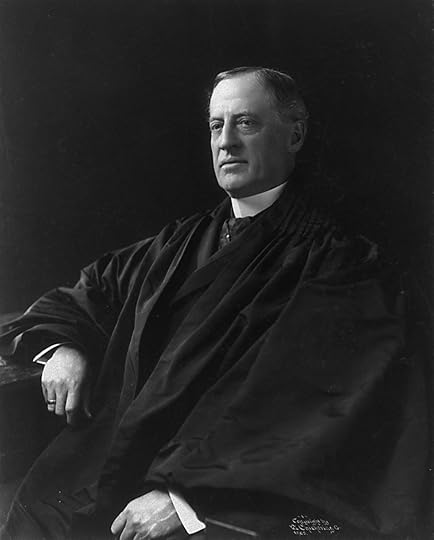
COLT, LeBaron Bradford, a Senator from Rhode Island; born in Dedham, Dedham County, Mass., June 25, 1846; attended the public schools and Williston Seminary; graduated from Yale University in 1868 and from the law department of Columbia College, New York City, in 1870; devoted a year to European travel; upon his return to the United States in 1871 was admitted to the bar and commenced practice in Chicago, Ill.; moved to Bristol, R.I., in 1875 and practiced law in Providence, R.I.; member, State house of representatives 1879-1881; appointed by President James Garfield United States district judge for the first judicial district 1881-1884, when he was appointed by President Chester Arthur presiding judge of the United States Circuit Court of Appeals for the first circuit; elected in 1913 as a Republican to the United States Senate; reelected in 1919 and served from March 4, 1913, until his death in Bristol, R.I., August 18, 1924; chairman, Committee on Conservation of Natural Resources (Sixty-fifth Congress), Committee on Immigration (Sixty-sixth through Sixty-eighth Congresses); interment in Juniper Hill Cemetery.
(Source: http://bioguide.congress.gov/scripts/...)
More:
http://en.wikipedia.org/wiki/LeBaron_...
http://mssa.library.yale.edu/obituary...
http://www.fjc.gov/servlet/nGetInfo?j...
http://www.findagrave.com/cgi-bin/fg....
http://libserv23.princeton.edu/prince...-----
(no image) Senators of the United States: A Historical Bibliography, a Compilation of Works by and About Members of the United States Senate, 1789-1995 by Jo Anne McCormick Quatannens (no photo)
 Frank B. Kellogg
Frank B. Kellogg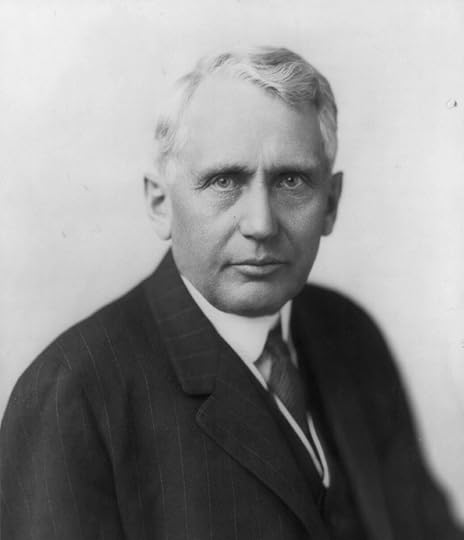
Frank B. Kellogg was born December 22, 1856, in Minnesota. He attended public schools and college in Minnesota, eventually graduating from law school. He served as Rochester, Minnesota city attorney from 1878-1881 and as Olmstead County Attorney.
Active in Republican Party politics, Kellogg was a delegate to the Republican National Conventions in 1904, 1908, and 1912, and served as a member of the Republican National Committee from 1904 to 1912. He acted as special counsel to the U.S. government prosecuting antitrust suits. Minnesota voters elected Kellogg U.S. Senator, and he served from 1917 to 1923.
Coolidge appointed him ambassador to Great Britain (1923-1925), and he succeeded Charles Evans Hughes as secretary of state on March 5, 1925, serving until 1929. Coauthor of the Kellogg-Briand Peace Pact of 1928, Kellogg was awarded the Nobel Peace Prize in 1929. Kellogg also served as President of the American Bar Association (1912-1913). He died on December 21, 1937.
(Source: http://millercenter.org/president/coo...)
More:
https://en.wikipedia.org/wiki/Frank_B...
http://bioguide.congress.gov/scripts/...
http://www.mnopedia.org/person/kellog...
http://www.nobelprize.org/nobel_prize...
http://history.state.gov/departmenthi...
http://www.spartacus.schoolnet.co.uk/...
(no image) The Autobiography of Frank B. Kellogg by Frank B. Kellogg (no photo)
(no image) Frank B. Kellogg: A Biography by David Bryn-Jones (no photo)
(no image) Frank B. Kellogg papers: 1890-1942. by Frank B. Kellogg (no photo)
(no image) The Frank B. Kellogg Papers: 1916-1937 by Minnesota Historical Society (no photo)
(no image) Frank B. Kellogg and American Foreign Relations, 1925-1929, by Lewise Ethan Ellis (no photo)
 Porter McCumber
Porter McCumber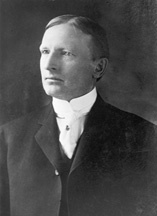
McCumber, Porter James, a Senator from North Dakota; born in Crete, Will County, Ill., February 3, 1858; moved with his parents to Rochester, Minn., the same year; attended the common schools; taught school for a few years; graduated from the law department of the University of Michigan at Ann Arbor in 1880; admitted to the bar and commenced practice at Wahpeton, Dak. (now North Dakota) in 1881; member, Territorial house of representatives 1885; member, Territorial senate 1887; served as State’s attorney of Richland County 1889-1891; elected as a Republican to the United States Senate in 1899; reelected in 1905, 1911, and 1916 and served from March 4, 1899, to March 3, 1923; unsuccessful candidate for renomination; chairman, Committee on Manufactures (Fifty-seventh Congress), Committee on Pensions (Fifty-eighth through Sixty-second and Sixty-sixth and Sixty-seventh Congresses), Committee on Indian Affairs (Fifty-ninth Congress), Committee on Transportation Routes to the Seaboard (Sixty-third through Sixty-fifth Congresses), Committee on Finance (Sixty-seventh Congress); resumed the practice of law in Washington, D.C.; appointed by President Calvin Coolidge in 1925 as a member of the International Joint Commission to pass upon all cases involving the use of the boundary waters between the United States and Canada, in which capacity he served until his death in Washington, D.C., May 18, 1933; original interment in the Abbey Mausoleum, adjoining Arlington National Cemetery, Arlington, Va.; remains removed and reinterred in unknown location.
(Source: http://bioguide.congress.gov/scripts/...)
More:
http://en.wikipedia.org/wiki/Porter_J...
http://www.archive.org/stream/nationa...
http://www.findagrave.com/cgi-bin/fg....
http://www.theodorerooseveltcenter.or...
http://www.griggscountyhistoricalsoci...
(no image) Senators of the United States: A Historical Bibliography, a Compilation of Works by and About Members of the United States Senate, 1789-1995 by Jo Anne McCormick Quatannens (no photo)
 by John Milton Cooper Jr. (no photo)
by John Milton Cooper Jr. (no photo) by Alfred E. Eckes Jr. (no photo)
by Alfred E. Eckes Jr. (no photo) by Kimberley S. Johnson (no photo)
by Kimberley S. Johnson (no photo) by C. Hoebeke (no photo)
by C. Hoebeke (no photo)
Books mentioned in this topic
The A to Z from the Great War to the Great Depression (other topics)Dawn of Desegregation: J.A. De Laine and Briggs v. Elliott (other topics)
Notable U.S. Ambassadors Since 1775: A Biographical Dictionary (other topics)
Historical Dictionary of United States Political Parties (other topics)
Lawyers Lawyer: The Life of John W. Davis (other topics)
More...
Authors mentioned in this topic
Ophelia De Laine Gona (other topics)Harold F. Bass Jr. (other topics)
William Henry Harbaugh (other topics)
Cathal J. Nolan (other topics)
Neil A. Wynn (other topics)
More...






The Inquiry was a study group established in September 1917 by Woodrow Wilson to prepare materials for the peace negotiations following World War I. The group, composed of around 150 academics, was directed by presidential adviser Edward House and supervised directly by philosopher Sidney Mezes. The Heads of Research were Walter Lippmann, who was later replaced by Isaiah Bowman. The group first worked out of the New York Public Library, but later worked from the offices of the American Geographical Society of New York, once Bowman joined the group.[1]
Mezes's senior colleagues were geographer Isaiah Bowman, historian and librarian Archibald Cary Coolidge, historian James Shotwell, and lawyer David Hunter Miller. Progressive confidants who were consulted on staffing but who did not contribute directly to the administration or reports of the group included James Truslow Adams, Louis Brandeis, Abbott Lawrence Lowell and Walter Weyl.
21 Members of The Inquiry, later integrated into the larger American Commission to Negotiate Peace, traveled to the Paris Peace Conference in January 1919, accompanying Wilson aboard the USS George Washington to France.
Also included in the group were such academics as Paul Monroe, a professor of history at Columbia University, was a key member of the Research Division who drew on his experience in the Philippines to assess the educational needs of developing areas such as Albania, Turkey and central Africa, and Frank A. Golder, a history professor from Washington State University specializing in the diplomatic history of Russia, who wrote papers on Ukraine, Lithuania, Poland, and Russia.
(Source: http://en.wikipedia.org/wiki/The_Inquiry)
More:
http://www.cfr.org/about/history/cfr/...
http://www.archives.gov/research/fore...